- Travel Professionals
- Business Events
- Destinations
- Things to do
- Accommodation
- Plan your trip


To eat, drink & be merry
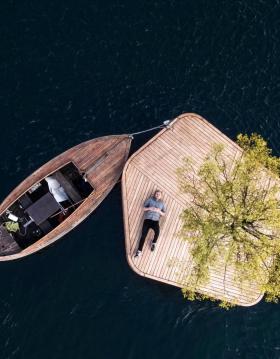
Design and Architecture
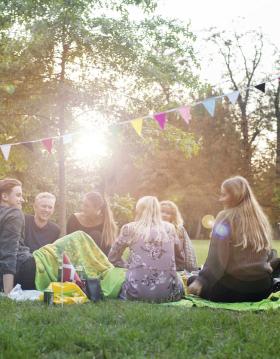
To find hygge
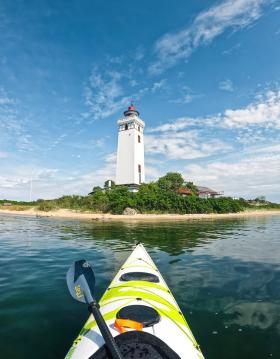
Our Outdoors
Welcome to denmark, the land of everyday wonder.
Get ready for simple pleasures and unexpected delights. We're here to make your visit to Denmark the most wonder-full experience. 'Where is Denmark?' is one of the most searched phrases about our little country. So, we can see we have a bit of work to do – but that's fine! Here's a handy map to get you going.
What will you visit first?
Denmark is always a great destination to visit; regardless of the time of year, each season has its beauty. We assure you, there'll be plenty of things to do, rain or shine.
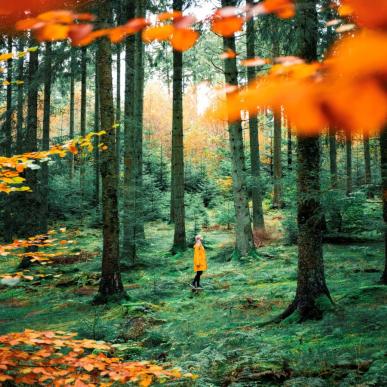
Savour the season

Proper Danish pastries

Tasty island hopping

Discover our world-famous food scene
Who needs mountains we don't.
And it's not because we don't have any (although, in Denmark, we really don't have any). It's because we have plenty of other natural wonders right here, ready to leap into and explore.

12 beautiful places to discover
The danish big four.
Small is beautiful, especially when it comes to our Danish cities. And because our four biggest ones are cosy and easy to explore, they're great places to get up close to Danes in their natural habitats!
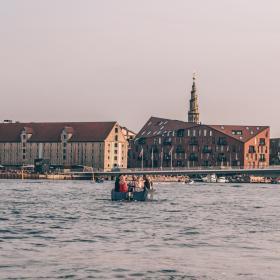
So clean you can swim in the harbour and go everywhere by bike. Our capital is pretty special.
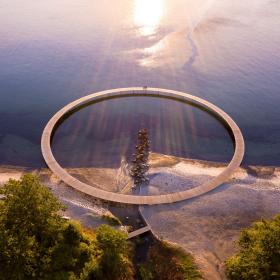
Aarhus is nestled by beaches, forests and national parks. Oh, and it's a cultural hotspot too.
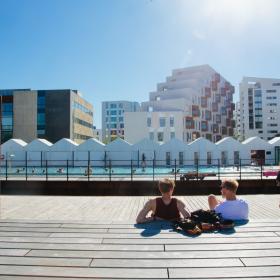
This quaint little city on the island of Fyn is where Hans Christian Andersen was born!
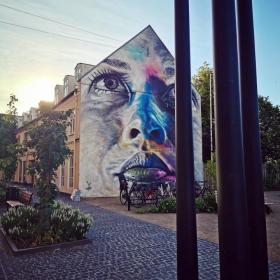
Viking legacy, modern architecture and some of the best street art in Denmark can be found in Aalborg.
It's all about having a good time
We're pioneers in hedonistic sustainability over here in Denmark. And if you don't know what that means, you'll just have to click on to find out!
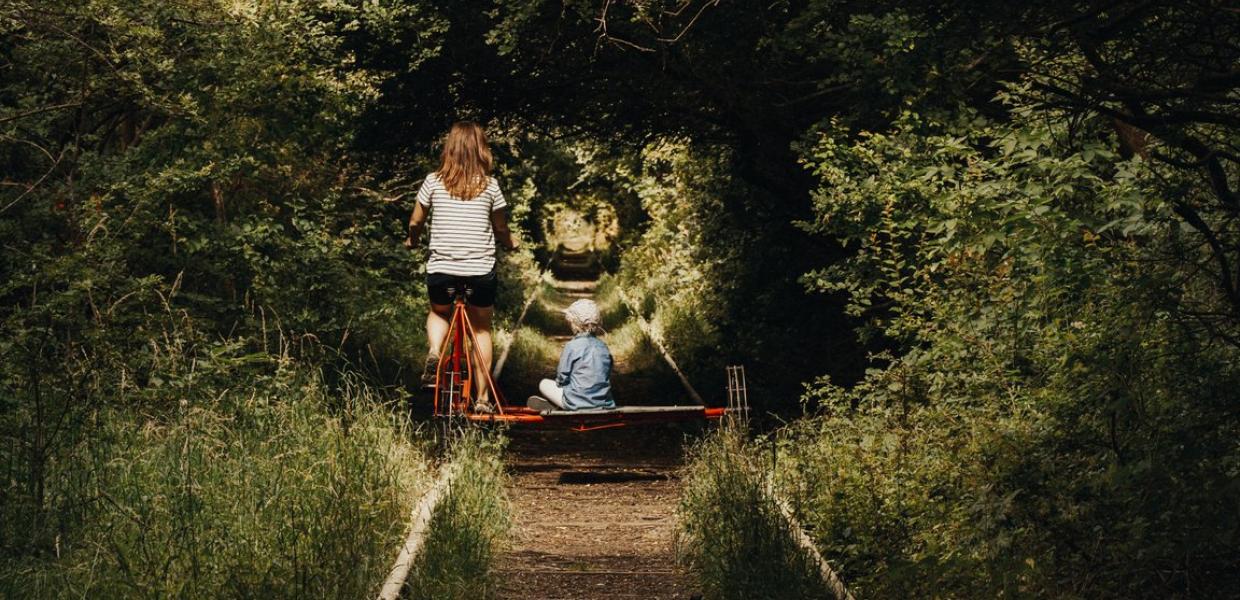
Go green in Denmark
When would you like to come to denmark.
If we had to pick a favourite season it would be...no we can't. They're all great times to be here! You'll just have to come at least four times and decide for yourself.

The travel basics
No, you can't use euros here. Yes, we do get nice warm summers. And yes, we do have pictures to prove it. All your Denmark questions answered!
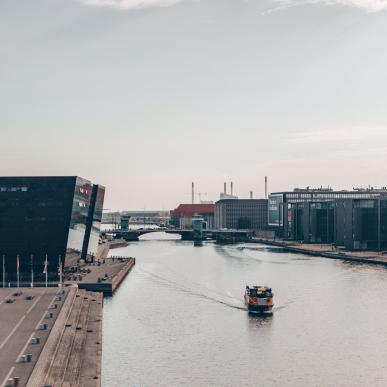
How to get to and around Denmark

17 fun facts about Denmark
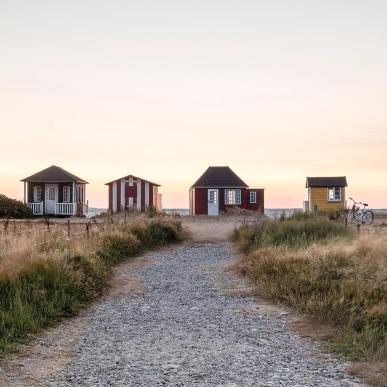
Our complete Denmark A-Z
Now that you know where denmark is...read more about it here.
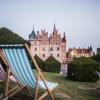
Share your wonders :
- Denmark Media Centre
- Web Accessibility
- Sign up for our newsletter here
- Sign up for the Business Events newsletter
- Sign up for the Travel Trade newsletter

The Perfect 5 to 7 Days in Denmark Itinerary
Last Updated on February 13, 2024
by Emily Marty
Disclaimer: This article contains affiliate links. That means if you click a link and make a purchase, we may make a small commission. As an Amazon Associate we earn from qualifying purchases. For more information, see our privacy policy.

Denmark is a very popular tourist destination, and the perfect visit to this stunning Nordic nation wouldn’t be complete without a proper Denmark itinerary. If you’re planning on spending 5 to 7 days in Denmark, then read on! This trip outline covers the country’s highlights, as well as some lesser-known attractions that are well worth a visit in their own right.
Table of Contents
How Many Days in Denmark?
A key part of planning any holiday is figuring out how many days to spend at your destination. If you’re putting together an itinerary for a trip to Denmark, you’re probably wondering what the minimum length of time you’ll want to spend there to get a feel for the place is.
Naturally, this varies somewhat from person to person, and will largely depend on what you like to do on your holidays, as well as what appeals to you about visiting Denmark in the first place.
With that in mind, trying to spend at least 5 days in Denmark is advisable, as it will allow you to visit a few of the country’s major cities and ensure that you don’t feel rushed in going from point A to point B.
Bear in mind that both Denmark and its cities are remarkably compact, so getting around is generally quick and straightforward. In fact, you can see a great deal of the country in just five days as a result
Having said that, you’re hardly going to run out of things to do if you end up spending one week in Denmark, instead.
Having an extra couple of days in the Nordic nation means you can visit some of the countryside, for example, or explore some of its nature reserves or even head to places like Frederiksborg Castle in Hillerød or Kronborg Castle in Helsingør, several of which are fairly easy to access from the cities.
On the other hand, if you only have 3 days in Denmark or less, then plan on spending that in Copenhagen and maybe heading out on a day trip from the capital rather than planning to explore Denmark in its entirety.

Getting To & Around Denmark
One of the best things about visiting Denmark is how easy it is to get around once you’ve arrived in the country. Let’s be honest – Denmark is definitely on the smaller size, especially compared to other Nordic and Scandinavian countries like Norway , Sweden and Finland .
Combine this with the comprehensive and reliable Danish train network, which will take you to just about any town or city with ease (and often in a fairly short span of time, too), and Denmark is pretty much the ideal destination if you’re planning on travelling without a car.
In fact, Denmark is perhaps one of the few countries in Europe where hiring a car has arguably next to no benefit beyond the flexibility that it offers.
Rail services in Denmark will get you pretty much anywhere a car can in the same amount of time, and, naturally, if you end up hiring a car for your trip, you’ll need to worry about parking, paying for petrol, and so on.
Buses represent another great alternative to travelling by car in Denmark. Much of the country is well-serviced by buses, tickets for which tend to be on the more affordable side, compared to equivalent train services. You can view train & bus schedules here.
As far as airports are concerned, flying into Copenhagen’s Kastrup Airport, which is Denmark’s largest, will give you access to the greatest range of airlines and flight routes.
Conveniently, you can take the local metro service directly from the airport into downtown Copenhagen and Copenhagen Central Station, which usually only takes around 15-20 minutes.
The country’s other major airports are near the cities of Aarhus, Aalborg, Billund, and Odense.

5 to 7-Day Denmark Itinerary
This itinerary will see you arriving in Copenhagen, the country’s cosy capital. After spending a few days there, you’ll be moving onto Aarhus, where you’ll spend a couple of days; this is where the five-day version of the itinerary ends.
If you decide to stay for 7 days in Denmark, then you’ll be heading to Aalborg for days 6 and 7 of the trip.
Day 1 – Copenhagen
For day 1 of your trip, you’ll be arriving in Copenhagen ! A city with seemingly endless charm and charisma, Copenhagen is the historic and unique capital of Denmark and is home to beautiful architecture, quaint canals, and plenty to do and see.
Why not start your holiday off with a bang and visit some of the city’s royal palaces? The castles of Rosenborg, Amalienborg, and Christiansborg are all well worth checking out, featuring some stunning and fairly distinct architecture.
Make sure to purchase a Copenhagen Card if you plan on visiting a lot of attractions. You can also take a bike tour if you want to explore some of the sights with a tour guide.
For unforgettable views of Copenhagen, you can climb to the top of the city’s Round Tower – just try not to get dizzy!
Finally, you can finish the day off with a walk around the city’s iconic Nyhavn district and wandering around the cobblestone streets in the centre of the city. Known worldwide for its charming, colourful townhouses, cafes, and bars, Nyhavn is pretty busy in the warmer months, but its atmosphere simply has to be experienced firsthand.
If you’re hungry, head to one of Copenhagen’s many fantastic food markets such as TorvehallerneKBH or Reffen. For those looking for something a bit more high-end, there are also countless fine dining establishments that call the Danish capital home. You can also take a food tour to try some of the nation’s iconic dishes.
It’s also recommended that you spend tonight, as well as nights 2 and 3 of your trip, in Copenhagen.

Where to Stay in Copenhagen
Ascot Hotel – This luxury hotel is in the centre of Copenhagen close to most major attractions. They offer a large range of rooms as well as breakfast daily and a gym onsite.
The Square – This 4-star hotel is right across from Tivoli Gardens and has rooms suitable for singles, couples and larger families. There’s also a bar and common lounge for guests to enjoy.
Copenhagen Downtown Hostel – If you’re travelling solo or visiting Denmark on a budget, then this hostel has dorm and private rooms, excellent common areas, 24-hour reception, and a bar on site!
Not quite what you’re looking for? Click here to browse more Copenhagen hotels!
Day 2 – Copenhagen
On the second day of this Denmark itinerary, you’ll be visiting some of Copenhagen’s cultural highlights, including its world-famous Tivoli Gardens. The second-oldest amusement park in the world, Tivoli is, naturally, pretty old-school, but it’s still worth checking out for its historical value and unique atmosphere. You can pre-buy tickets here.
Afterwards, you can head to the National Museum of Denmark, which is home to a number of vital artefacts from the Viking era. The impressive Gundestrup Cauldron, thought to have been created sometime in the Iron Age, is a particular standout.
The second day is also the perfect opportunity to try some delicious baked goods, which are something that Denmark is actually pretty famous for. We recommend the chain Meyers Bageri; with several locations across the city, their cinnamon rolls are not only traditional but absolutely delicious!
What’s more, at the end of each day, they donate any unsold bread and cakes to charities across Copenhagen that work to support the homeless, so your money will be going to a good cause.

Day 3 – Humlebæk & North Zealand Day Trip
For the third day of your holiday, we recommend taking a day trip from Copenhagen to North Zealand, described by many as the ‘Danish Riviera.’
It’s a popular holiday destination among Copenhageners, and Humlebæk, one of the region’s more significant towns, is just over 30 km away from Copenhagen itself and easily accessible via train.
Humlebæk is home to the Louisiana Museum of Modern Art, which actually happens to be one of the most famous modern art museums in the world. So, if you’re a fan of the arts, then you’ll definitely want to head to Humlebæk and get to know some of the finest contemporary artworks in the world.
Afterwards, you can either explore more of Humlebæk and the charming nearby beach of Nivå or head further afield and discover more of the North Zealand region.
If you’re not keen to head to North Zealand, consider heading out on a day trip to nearby Malmo, Sweden . Or, if you’re interested in Viking history, head to Roskilde which is also within easy reach of the Danish capital and won’t take long to get back to Copenhagen. Its main cathedral is also a UNESCO World Heritage Site.
Do keep in mind that the next day of your trip will see you travelling from Copenhagen to Aarhus, so you might want to make sure not to overdo it!

Day 4 – Aarhus
On day 4, you’ll be making the trip from Copenhagen to Aarhus , Denmark’s second-largest city. If travelling by train, you can expect the journey to take a little over three hours.
Once you’ve arrived, we suggest acquainting yourself with the city by going on a walking tour of its downtown area. The food market Aarhus Street Food is the perfect place to grab some authentic and delicious local fare; located just off the wharves in the Kødbyen district, this is a fantastic option if you’re keen for a more relaxed, affordable location for a bite to eat.
Then, you can pay a visit to the open-air museum Den Gamle By, which features reconstructions of a variety of historic buildings and feels like something of a time capsule!
Note that you should plan to spend tonight and tomorrow night in Aarhus.
Where to Stay in Aarhus
Hotel Oasia – This 3-star hotel is an excellent choice for those looking for a hip place to stay in the centre of Aarhus. They have a great, central location, plenty of plush rooms on offer and a lovely breakfast buffet available in the morning.
Villa Provence – Those looking for a bit of luxury will love this plush hotel in the Aarhus canal area. Located within easy reach of the train station and close to the top attractions, they have a range of lovely rooms to choose from.
Danhostel Aarhus City – Budget and solo travellers will love this highly-rated hostel in the centre of Aarhus. They have a range of dorms and private rooms available along with good self-catering facilities for guests to use.
Not quite what you’re looking for? Click here to browse more Aarhus hotels!

Day 5 – Aarhus
We recommend that you use day 5 of your trip to visit some of Aarhus’ excellent cultural attractions, starting off with the tranquil Botanical Garden (the greenhouses are especially impressive!).
Then, you can head to the ARoS Art Museum and Moesgaard Museum; ARoS is one of Scandinavia’s most significant art museums, while the Moesgaard Museum features a number of fascinating exhibits related to archaeology and anthropology.
If you’re planning on seeing Denmark in 5 days only, then this will be the last day of your trip. So, if you’re flying home from Copenhagen, make sure to factor that into your plan for the day; note that the time it takes to reach Copenhagen from Aarhus via train is usually around 4 hours.

Day 6 – Aalborg
Seeing Denmark in 7 days? Then, for day 6 of your trip, you’ll want to head north from Aarhus to Aalborg; travelling between the two cities usually takes a little over an hour by train.
Once you’ve arrived in Aalborg, we suggest heading to the Maritime Experience Centre at Springeren, which is a must-see for enthusiasts of maritime history.
Or, if Vikings are more your thing, you can head to the Viking Museum at Lindholm Høje, which is just north of Aalborg city. Home to museums and a burial ground, the Viking Museum is absolutely fascinating, even if you don’t have much existing knowledge of the Vikings or their culture.
Afterwards, you might like to climb the observation tower, Aalborgtårnet, for a view over the city. You can easily combine this with a walk into downtown Aalborg, which makes for a fantastic way to get your bearings here.
If you’re keen on sampling the local Danish fare during your trip, then you may want to consider heading to Mortens Kro for dinner tonight. Regarded by many as one of the best restaurants in the city, Mortens Kro specialises in serving up fairly typical Danish cuisine, as well as a number of vegetarian options. Both a la carte and tasting menus are available, and booking in advance is recommended to avoid disappointment.
We suggest that you spend the night in Aalborg, keeping in mind that tomorrow may be the last day of your trip, and, as such, you’ll need to make arrangements to return to Copenhagen then, if that’s where you’re flying home from.

Where to Stay in Aalborg
Zleep Hotel Aalborg – Those looking for a hip, mid-range place to stay in Aalborg will love this 3-star hotel. They have chic rooms on offer, an on-site bar to lounge in and a great breakfast available for guests each morning.
KOMPAS Hotel – If you’re after a bit more luxury in Aalborg, then this hotel is an excellent choice. Located in the heart of the city close to all of the best attractions, there are lovely rooms to choose from, a great breakfast on offer and plenty of other amenities for guests to enjoy.
Not quite what you’re looking for? Click here to browse more Aalborg hotels!
Day 7 – Aalborg
For the last day of your trip to Denmark, we recommend taking a day trip from Aalborg to Rebild National Park ( Rebild Bakker in Danish). Buses departing from central Aalborg will take you to and from the national park, with a journey time of a little under an hour.
The area comprises some lovely hilly heathland and is the perfect place for a hiking trip or picnic. Don’t expect much elevation gain, of course, but the park is truly tranquil, making for a nice change after nearly a week spent exploring Denmark’s incredible cities.
Once you’re back, we suggest (unless you’re vegetarian/vegan) sampling the local seafood, which makes up a massive part of the local cuisine. One of the best places for it is the restaurant Fisk & Skaldyr, which specialises in serving seafood of the highest standard to diners.
With oysters, salmon, mussels, prawns, eel, lobster, and halibut on the menu, seafood lovers are truly in for a treat here. The desserts are also to die for!
Note that there aren’t any vegetarian/vegan mains on the menu, so plant-based diners will likely want to contact the restaurant ahead of time to see if they’re able to accommodate dietary requirements.

Have More Time?
If you’d like to spend more than 7 days in Denmark, then you may want to head to Odense from Aalborg; the 3rd-largest city in Denmark, Odense is the hometown of Hans Christian Andersen and has its own unique character and plenty to see and do! Billund is home to the original LEGOLAND , too, which is great fun for children and adults alike.
Or, if you want to see Denmark at its ‘peak,’ you can visit Himmelbjerget; it’s one of the highest points of the Danish landscape with an elevation of a whopping 147 metres! Its name even translates to ‘sky mountain,’ in reference to its height (which is impressive by Danish standards, in any case).
Denmark is an incredible country, and both its cities and its countryside have so much to offer visitors. We hope that this itinerary helps you craft the perfect plan for your trip to Denmark and that you have an amazing time there!
Are you planning to visit Denmark? Have any questions about this itinerary? Let us know in the comments!

Related Posts:

Discover Aarhus: The Essential One-Day Itinerary

Copenhagen or Stockholm: Which City to Visit?

The Perfect Malmo Day Trip from Copenhagen

About Emily Marty
Emily is a writer for The World Was Here First. Originally from Melbourne, Australia, she is currently based in the UK. She enjoys exploring Northern & Western Europe and Southeast Asia and has a bit of a thing for islands in particular.
Hi Emily, Thanks for putting out such detailed itinerary. I am looking for a week travel to Denmark and this really helped a lot to put things in place specially to explore areas outside of Copenhagen. Thanks again. Best wishes for future travels.
Regards Milan
Leave a Comment Cancel reply

Denmark Travel Guide
Last Updated: July 17, 2024
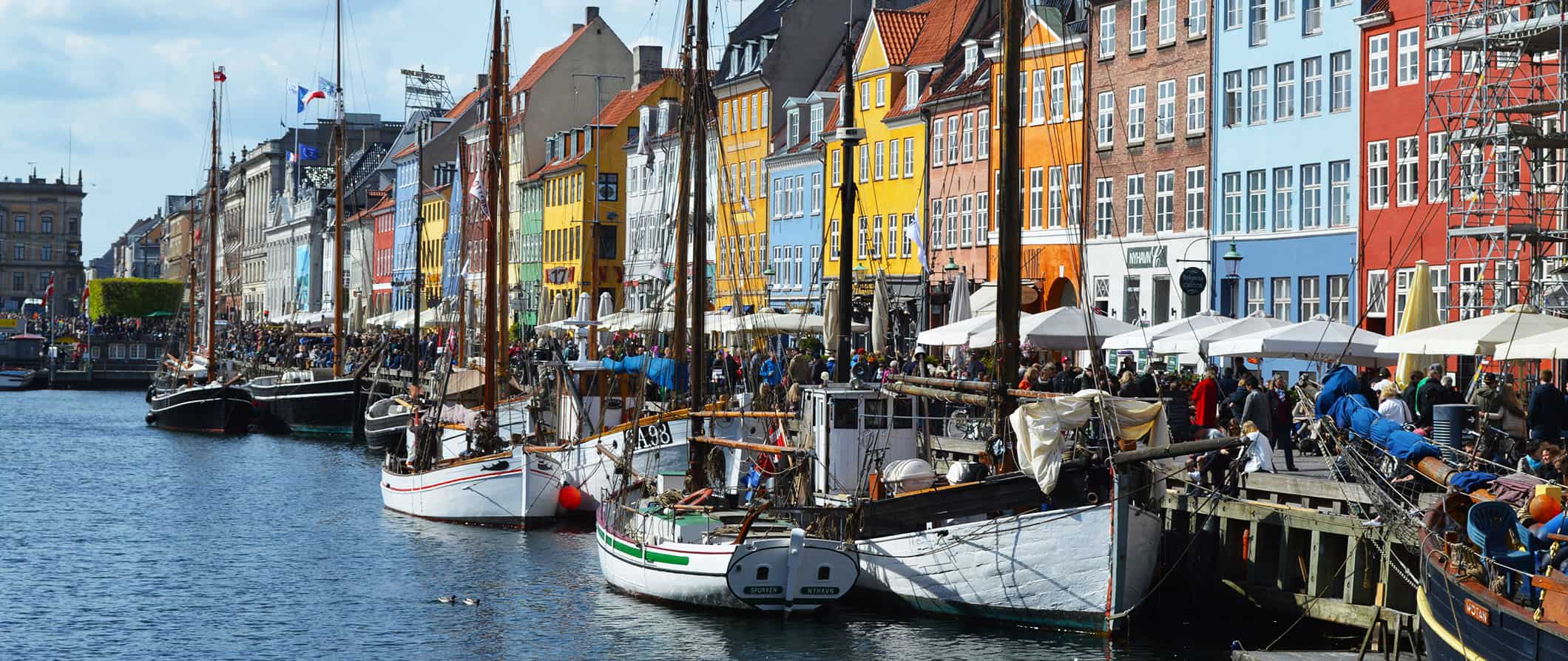
Denmark is one of my favorite countries in the world. With its beautiful landscape, charming medieval-like towns, clean air, bike-friendly cities, and locals who love to have a good time (Danes frequently stay out until dawn), I can never visit Denmark enough.
The Danes have a very ordered but happy lifestyle. To them, life is meant to be lived — not spent in an office. Most tourists only spend a few days in Copenhagen before the high costs of the country make them move on.
However, those people miss out on what the country has to offer. Besides, there are plenty of ways to save money here too!
So, don’t just go to Copenhagen! Be sure to explore the coastlines, tiny cities, and beautiful parks that fill this small but wonderful place. There is a lot to see and do and very few tourists take the time to travel beyond the capital. That means you’ll have much of the country to yourself as you explore.
This travel guide to Denmark can help you plan your trip, save money, and make the most of your time in this charming country!
Table of Contents
- Things to See and Do
- How to Stay Safe
- Where to Stay
- Typical Costs
- Suggested Budget
- Money-Saving Tips
- How to Get Around
- Best Places to Book Your Trip
- Related Blogs on Denmark
Click Here for City Guides
Top 5 things to see and do in denmark.
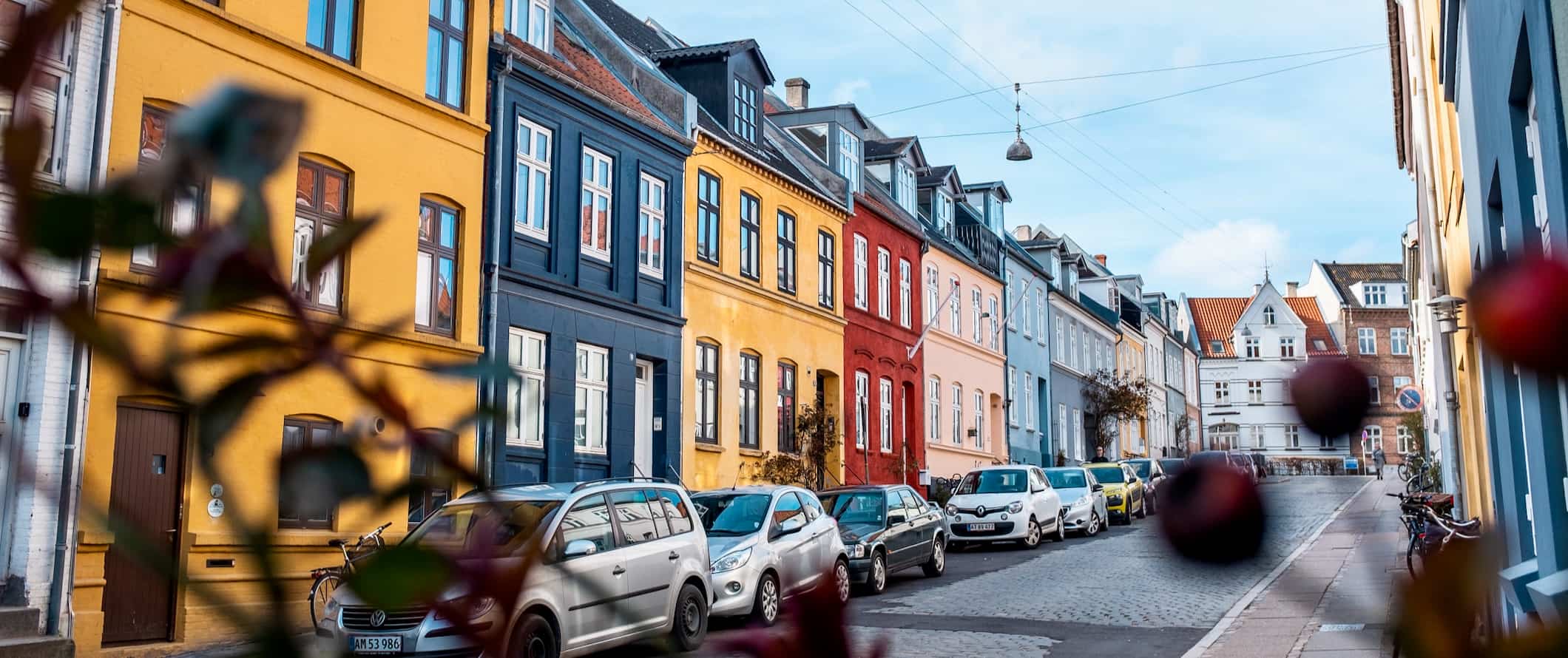
1. Visit Copenhagen
One of my favorite cities in the world is Copenhagen , the capital of Denmark. It’s beautiful, the architecture is amazing, the nightlife is pretty wild, there’s a robust foodie scene, and the locals are friendly. Visit the stunning Rosenborg Castle, which dates back to 1606. Christiansborg Palace and Amalienborg Palace offer a deeper look into the lives and history of Demark’s royalty. Check out unique museums like Cisternerne, a venue and exhibition space located in an underground cistern, or the Experimentarium, an interactive science museum perfect for families. Be sure to cruise the colorful 17th-century Nyhavn harbor, and take a walk to the iconic Little Mermaid sculpture. Be sure to also visit Tivoli Gardens, a fun little amusement park in the heart of the city.
2. Explore Aarhus
Denmark’s second largest city is known for its art and culture. Enjoy plenty of fascinating museums like Den Gamle By, which features 75 historic buildings and offers a glimpse into daily life from the 18th to 20th century. AroS is one of the biggest art museums in Europe and has an incredible rooftop platform that offers the best panoramic views in the city. Beyond the many museums and galleries are unique amusement parks, such as Legoland and the Tivoli Friheden. This is a major college town so you can find a lot of cheap bars and good budget restaurants. Plus, less than an hour outside the city is Mols Bjerg National Park, where you can go hiking and also see burial mounds from the Bronze Age.
3. See Roskilde
Roskilde was Denmark’s capital from 960 to 1536. is an amazing city to view the country’s history, whether it be at the various churches, brick building-lined streets, or the Viking-influenced museums. At the Viking Ship Museum, you can see five 1,000-year-old original ships from the Viking age. The Roskilde Museum displays more of the city’s past and is set in two historic buildings that are part of the city’s Culture District. This area includes the 17th century Roskilde Cathedral, a UNESCO World Heritage Site, and other important historical buildings. RAGNAROCK museum is a great place to get a look into modern Danish culture through rock and pop music. In January, the city hosts Lysfest, a festival of lights, and in June, one of Europe’s largest music festivals, the Roskilde Festival, happens. If you want outdoor activities, Skjoldungernes National Park is also nearby with hiking trails, forests, and water activities.
4. Go hiking
Like their Scandinavian counterparts, Danes love the outdoors. Whether you want a short-day hike from the city or something more challenging, Denmark has it all. Some beautiful trails to hike are the Camønoen Trial (174km/108mi) and the Gendarmstien Trial (84km/52mi). The area around Mons Klint is a UNESCO biosphere reserve with opportunities for hiking along white chalk cliffs. Thy National Park, on the west coast, and has 49 marked hiking trails to enjoy. Hærvejen, The Ancient Road, is a hiking route along the edge of Jutland with more than a hundred miles worth of trails to explore. You can find more trails at alltrails.com .
5. Hit the beach
With 7,400 kilometers (4,600 miles) of coastline, Denmark has its fair share of beaches. While the weather can be tricky, a sunny day on the beach in Denmark is a wonderful way to unwind. Many of the beaches on the west coast are beautiful stretches of white sand with surrounding dunes. Check out Blokhus beach and Saltum beach (near Blokus in the north), and Hornbæk beach (in the north near Hornbæk), Bøgebjerg beach (near Odense in the center of the country) is a draw for windsurfers and Rømø is an island a short drive away with wide sandy beaches and activities like horseback riding. The coastline of West Jutland has a number of sandy beaches and resort towns to explore and, for swimming in Copenhagen, check out Amager Beach Park and Svanemølle beach.
Other Things to See and Do in Denmark
1. visit kronborg castle.
Located along the coast in Helsingør and built between 1220-1230, the castle was declared a UNESCO World Heritage Site in 2000. It is also the castle where Shakespeare set his play, Hamlet, in 1609. It’s a great place to wander and explore, and it’s only an hour from Copenhagen. You can tour the castle and see the royal apartments (which date to 1576) as well as the dining hall (home to 40 tapestries depicting 100 different Danish kings) and the chapel (which was inaugurated in 1582). Tickets are 125 DKK.
2. Explore Dyrehaven
Known commonly as The Deer Park, this park was built in 1669 as hunting grounds for Danish royalty and is only a 20-minute train ride from Copenhagen. Spanning over 11 kilometers (7 miles), you can cycle, picnic, hike, and horseback ride in this UNESCO World Heritage Site. There are over 2,000 deer that live in the park. Be sure to visit The Hermitage at the center of the park, which was the royal hunting lodge built in the 1730s where King Christian VI could rest and entertain guests after a hunt. You can take a guided tour of the interior for 125 DKK. Bakken Amusement Park, also within the park, has all kinds of rides, carnival games, and slot machines. It’s the world’s oldest amusement park founded in 1583. Admission to both the park and amusement park is free.
3. Explore the Skagens Museum
This museum is located at the very tip of Jutland and features an extensive collection of works by the Skagen Painters, a group of artists who lived in Skagen in the late 19th and early 20th centuries when the town became a place for young artists from around Denmark to gather. The museum was founded in 1908 and merged with two other historic house museums in 2014. Now, the museum has nearly 11,000 works of art. Most paintings show scenes from the beaches, homes, and daily lives of those who lived in Skagen at the time. You can also see the studios in which a few of the artists worked. Admission is 125 DKK for the main museum. Two of the Skagen artist’s homes have been turned into exhibitions. You can visit all three for 200 DKK.
4. Visit Randers
A small town located on the Jutland peninsula, this is a nice place to base yourself if you want to hike, bird watch, or cycle. The city sits at the edge of the Gudena River, and its history goes back to the 11th century. You can walk along Denmark’s first pedestrian street and enjoy the historic architecture along the medieval alleyways. The city’s Clausholm Castle is one of the country’s last remaining castles. It was built in the 1690s and is one of the oldest Baroque estates in Denmark. Many of the rooms remain in their original condition. The surrounding grounds are home to 1,000 linden trees and it’s the perfect place for a picnic on a warm sunny day after exploring the castle. Admission to just the grounds is 50 DKK, while access to the park and the castle is 150 DKK. You can also see Randers Rainforest Zoo (the largest artificial rainforest in Northern Europe). Admission to the zoo is 215 DKK. For something out of the ordinary, check out the Memphis Mansion, a tribute to Elvis Presley and Johnny Cash. The museum was started by an enthusiastic collector of Elvis memorabilia. There’s even a diner with food inspired by the American South. Admission is 145 DKK.
5. Visit Svendborg
Located on the island of Funen in southern Denmark, Svendborg is a town entrenched in history Don’t miss Naturama, a wildlife museum with tons of interactive exhibits (admission is 175 DKK), as well as the Forsorgs museum, a ‘welfare’ museum in the city’s former poorhouse. It highlights the horrific working conditions of the city’s poor prior to Denmark becoming the equitable welfare state it is today. Be sure to also spend some time wandering around Svendborg and taking in the historical architecture. There are all kinds of charming narrow lanes and historic houses and shops in town. If you want to get outside, you can catch a ferry from Svendborg and go island hopping around the South Fyn Archipelago. There are also lots of places for hiking, cycling, kayaking, and other outdoor activities.
6. Meander through Tivoli
Just adjacent to Copenhagen Central Station, Tivoli is the city’s famous amusement park. Complete with a Ferris wheel, games, roller coasters, and a concert hall, this is an awesome place to spend an afternoon. It’s not cheap but it’s certainly fun There are rides for kids of all ages and plenty of places to grab a souvenir or a bite to eat. You may catch a live performance at one of the venues inside the park or enjoy the gardens of The Orangery. There’s even an aquarium and a bamboo forest inside the park. Depending on the time of year, you may see the park decked out for various holidays like Easter and Halloween. Avoid the weekend and school holidays when the place is overflowing with families. Weekday admission is 140 DKK during the off-season, 160 DKK during summer weekdays and summer weekends cost 180 DKK.
7. Head over to North Zealand
Just a train ride away from Copenhagen, North Zealand features an idyllic coastline, beautiful landscapes, and the Shakespearean setting of Kronborg Castle. The region is often called “The Danish Riviera” due to its plentiful sandy beaches and numerous cultural icons. Don’t miss Tisvildeleje, Dronningmølle, and Gudmindrup beach if you’re looking to lounge and enjoy the sunshine. If you are looking to get away from the city for a day or maybe more, this is an awesome place and one not often visited by tourists. Visit the 17th-century Frederiksborg Castle in Hillerød, which is considered Denmark’s Versailles (admission is 90 DKK). The Maritime Museum of Denmark (135 DKK) and the Louisiana Museum of Modern Art (145 DKK) can be found in North Zealand as well. Helsingør and Hillerød make for good bases in the region if you plan on exploring.
8. Visit the Jelling stones
The Jelling stones are massive runestones (raised stones with runic inscriptions), dating all the way back to the 10th century, that show the accomplishments of Kind Harald Bluetooth. The large stone is the first known place the name Denmark appears on record. The stones were declared a UNESCO Heritage Site in 1994 and are worth checking out if you are in the area (they are located in Jelling, which is just 25 minutes by car from Legoland). The oldest runestone was raised by King Gorm the Old in memory of his wife and the largest stone was left by Harald Bluetooth to celebrate his conquest of Denmark and Norway (wireless Bluetooth is named after Harald). You can reach Jelling by train from Aarhus. The ride takes just over an hour. Admission is free.
9. Watch the Hans Christian Andersen Parade
Famous for his fairy tales, this parade is a performance featuring over 30 characters from Hans C. Andersen’s literary works. Held every day during the summer behind the H. C. Andersen Museum in Odense (Andersen’s hometown) on the southwestern island of Funen, this is a neat event to check out, especially for children. The parade begins at the H.C. Andersen childhood home that’s now a museum and ends in the city center. Live performances act out the stories and there’s even a Fairy Tale Garden with a castle behind the museum.
10. Attend a music festival
Roskilde is the Danish music festival with the biggest international reputation (80,000 people take part), but it only offers a taste of the music scene in Denmark. The summer months are packed with festivals around the country. Distortion happens at the end of May and is a street party and electronic music festival in the heart of Copenhagen. NorthSide festival in June is three days of many stars in the indie and rock world. The Copenhagen Jazz Festival in July fills the city with music with stages in clubs, parks, museums, and other temporary stages. Smukfest in August happens in the forests of Dyrehave and is called “Denmark’s Most Beautiful Festival”. Tønder Festival at the end of August is focused on bringing people together around original music and connection. The list goes on. Danes love a good festival!
11. See Den Japanske Have (Japanese Gardens)
Located in the town of Aarhus, this beautiful and sophisticated Japanese garden includes a tea house, shop, café, several sub-gardens, and a Japanese house. The garden took two years to construct and is designed in the “kaiyu” style, with circular walking paths to take in the scenery of waterfalls, native Japanese trees and flowers, koi ponds, and miniature mountains. The garden is free and there are plenty of places to sit and enjoy a picnic lunch!
12. Visit Camp Adventure
This nature-focused park is surrounded by a beech forest with activities for all ages. It’s located on South Zealand, about an hour southwest of Copenhagen by car. You can also get there by train. Camp Adventure is the largest climbing park in Denmark with eleven courses covering all skill levels. The Forest Tower is an hourglass-shaped observation tower with a 3.2-kilometer walking path that takes you 45 meters high, giving you a view of the forest from above the trees. On a clear day, you can see all the way to Copenhagen. It’s the highest observation tower in Scandinavia and has won multiple architecture awards. Northern Europe’s largest flower farm is also part of the park. You can walk through the fields for free or pick your own bouquet for 50 DKK. Entrance to the climbing park is 375 DKK and the tower is 175 DKK. If you want to visit the both, the price is 475 DKK.
13. Go Hunting for Giants and Trolls
If you want to get off the beaten path, go looking for the Six Forgotten Giants and other large-scale artworks by Danish artist, Thomas Dambo. Back in 2011, Thomas set out to reduce waste and began turning discarded items into unique figures of giants and trolls. The Forgotten Giants are located in the suburbs around Copenhagen. One is even in the Freetown of Christiania and a few others are scattered around the city. There are more than thirty of these trolls and giants on display throughout Denmark. A few of them are near major cities like Odese, but most are in natural settings and scenic places. Finding them is an opportunity to go on a treasure hunt and get away from the tourist areas. Plus they’re all free to visit!
For more information on specific cities in Denmark, check out these guides:
- Aarhus Travel Guide
- Copenhagen Travel Guide
How to Stay Safe in Denmark
Denmark is a safe place to backpack and travel — even if you’re traveling solo. Denmark is the second safest country in the world so violent incidents are rare. Your only real concern is petty theft – and that is also really uncommon. Keep your valuables secure and out of reach just to be safe though (it’s good to do that anywhere).
Solo female travelers should feel safe here for all those reasons. However, the standard precautions you take anywhere apply here too (never leave your drink unattended at the bar, never walk home alone intoxicated, etc.). There are numerous solo female travel blogs that can provide more specific tips.
While cannabis used to be openly sold in Freetown Christiania, an intentional community in Copenhagen, since a shooting in 2016, the trade has been more or less forced out of sight. Avoid buying drugs here and make sure you do not take photos of anyone using or selling drugs either. You’ll get your camera broken by angry locals if you do.
Scams here are rare, however, if you’re worried about getting ripped off you can read about common travel scams to avoid here .
If you experience an emergency, dial 112 for assistance.
Remember to always trust your gut instinct. Avoid isolated areas at night, and be aware of your surroundings at all times. Make copies of your personal documents, including your passport and ID. Don’t leave your personal items unattended. You can always loop a strap of your bag around the leg of your chair for an extra level of security so no one can walk away it.
The most important piece of advice I can offer is to purchase good travel insurance. Travel insurance will protect you against illness, injury, theft, and cancellations. It’s comprehensive protection in case anything goes wrong. I never go on a trip without it as I’ve had to use it many times in the past. You can use the widget below to find the policy right for you:
Where to Stay in Denmark
Denmark has lots of fun, affordable, and social hostels. Here are some of my suggested places to stay in Denmark:
- Danhostel Aarhus City (Aarhus)
- Generator Copenhagen (Copenhagen)
- Woodah-Boutique-Hostel (Copenhagen)
- Copenhagen Downtown Hostel (Copenhagen)
- Danhostel Ishoj Strand (Ishoj)

Denmark Travel Costs
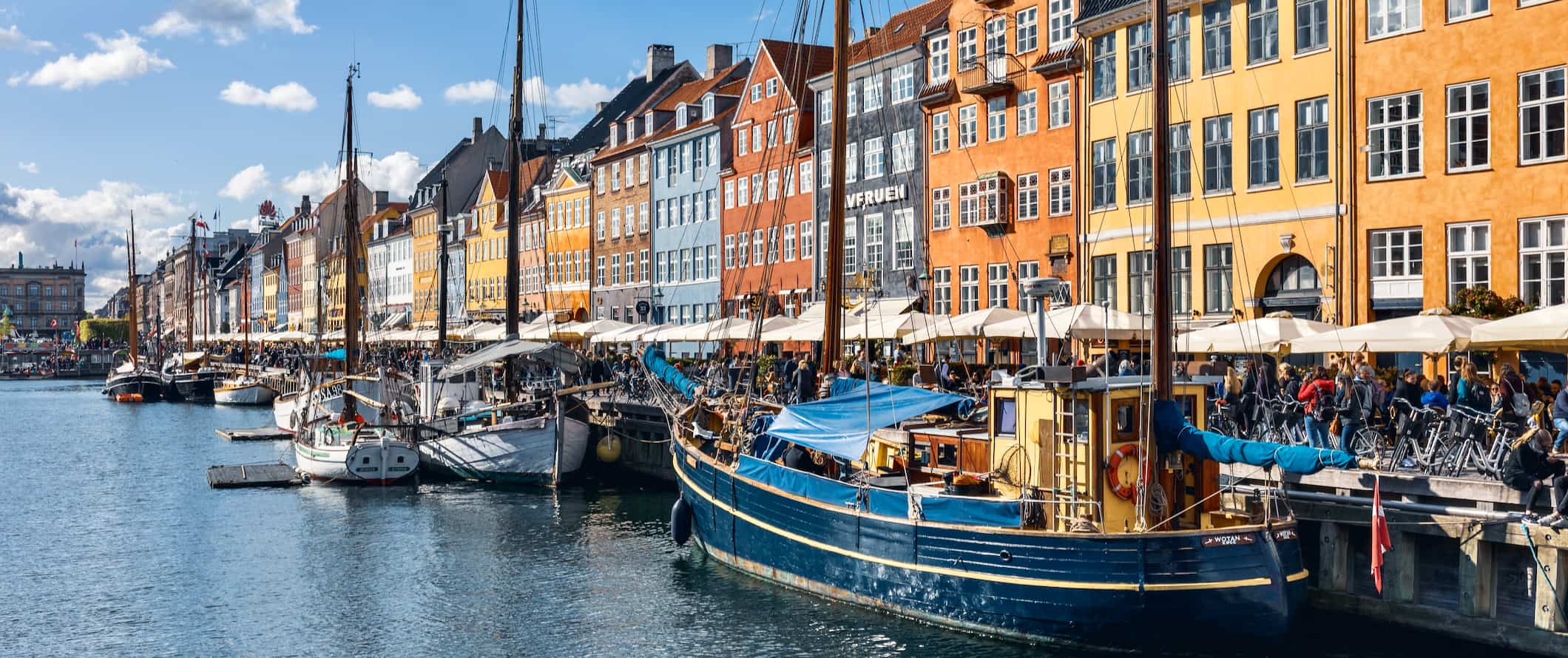
Accommodation
- Hostel Dorms – 330 DKK per night
- Hostel private rooms – 755 DKK
- Budget hotels – 750 DKK
- Airbnb private rooms – 300-500 DKK
- Airbnb apartments – 700 DKK
- Campsite – 60-100 DKK (FYI: Wild camping is illegal in Denmark.)
- Cheap takeaway sandwich shops – 150 DKK
- Fast food – 90 DKK
- Three-course meal and a drink – 500 DKK
- Pizza – 60-80 DKK
- Food trucks – 150 DKK
- Beer – 50 DKK
- Cappuccino/latte – 40 DKK
- Bottled water – 20 DKK
- Groceries – 400 DKK per week
Denmark Suggested Budgets
Backpacker – 585 dkk per day.
You can stay in a hostel dorm, cook all your meals, use public transportation, limit your drinking, and do free activities. If you want to eat out or drink more, add 100-200 DKK per day.
Midrange – 1,275 DKK Per Day
You’ll be able to stay in a hotel, eat out often, enjoy a couple of drinks each night, do more paid activities like museums and castles as well as walking tours.
Upscale – 2,300+ DKK Per Day
You’ll be able to do anything ya want with this daily budget! This is just the ground floor for luxury though. The sky is the limit after that!
Denmark Travel Guide: Money-Saving Tips
Denmark can be an expensive country to visit. The cost of living here is just really high. If you aren’t careful, you’ll blow through your entire budget in no time. There’s no way to make this country a “cheap” place to visit but here are some ways to save money when you’re here:
- Go orange – The Danish rail system offers cheap tickets via their website called “Orange tickets.” They are only available online, and you have to print out the ticket before you board the train. These tickets are up to 60% cheaper than what you can buy at the railway station. If you travel outside of the rush hour times, you can save even more!
- Get a city tourism card – If you plan to do a lot of sightseeing and visit a lot of attractions then I highly recommend you get one of the city passes that offer discounts and free admission to museums and attractions. They also come with free transportation. If you plan on seeing a lot, these can save you money. Most of the major cities in the country offer a tourism card so be sure to look into them.
- Refill your water bottle – The water in Denmark is safe to drink and is held to very high standards. Skip buying bottled water here and refill your bottle instead. LifeStraw makes a reusable bottle with a built-in filter so you can always be sure your water is clean and safe. The city of Copenhagen has also installed a number of drinking fountains around the city so you can easily fill up while you’re out for the day.
- Eat on the street – Street stalls selling hot dogs and sausages are cheap and plentiful. Fill up on them if you’re on a budget as they only cost a few dollars each. There are also a number of food halls around in Copenhagen where you can get good food for less than you’d pay in a restaurant. If it’s a nice day, you can get groceries at the local market and picnic in the park with the locals.
- Get a Hostelling International card – Danhostel.dk is the national accredited Hostelling International network. They operate 60+ hotels throughout the country so you’ll want to get an HI card if you plan on staying at their hostels during your stay as you get 10% off your stay. If purchased in Denmark, HI cards are 160 DKK.
- Stay with a local – Accommodation in Denmark is pricey. If you plan ahead, you can usually find Couchsurfing hosts throughout the country. This way, you not only have a place to stay but you’ll have a local host that can share their insider tips and advice. You may be able to find work exchanges where you can stay at a local hostel or B&B in exchange for helping out.
- Cook your food – Eating out in Denmark is not cheap. If you’re on a budget, cook your own meals. It won’t be glamorous but it will save you money! It’s pretty easy to find a food markets around the country. Look for open-air markets in the warmer months for local, seasonal food that’s much cheaper than eating out.
- Eat out for breakfast or lunch – If you must eat out, do so during lunch when specials and buffet deals make restaurants reasonably priced. The lunch menus are often similar to dinner but the prices are lower. You can also pick up a pastry or sandwich in a café for much less than going out for dinner.
- Book in advance – Booking train and bus tickets a month in advance can save you up to 50%. Also, booking your accommodations in advance can help you save money over last-minute prices. Some sites, like Booking.com, even have rewards programs that help you save extra the more you book through them.
How to Get Around in Denmark
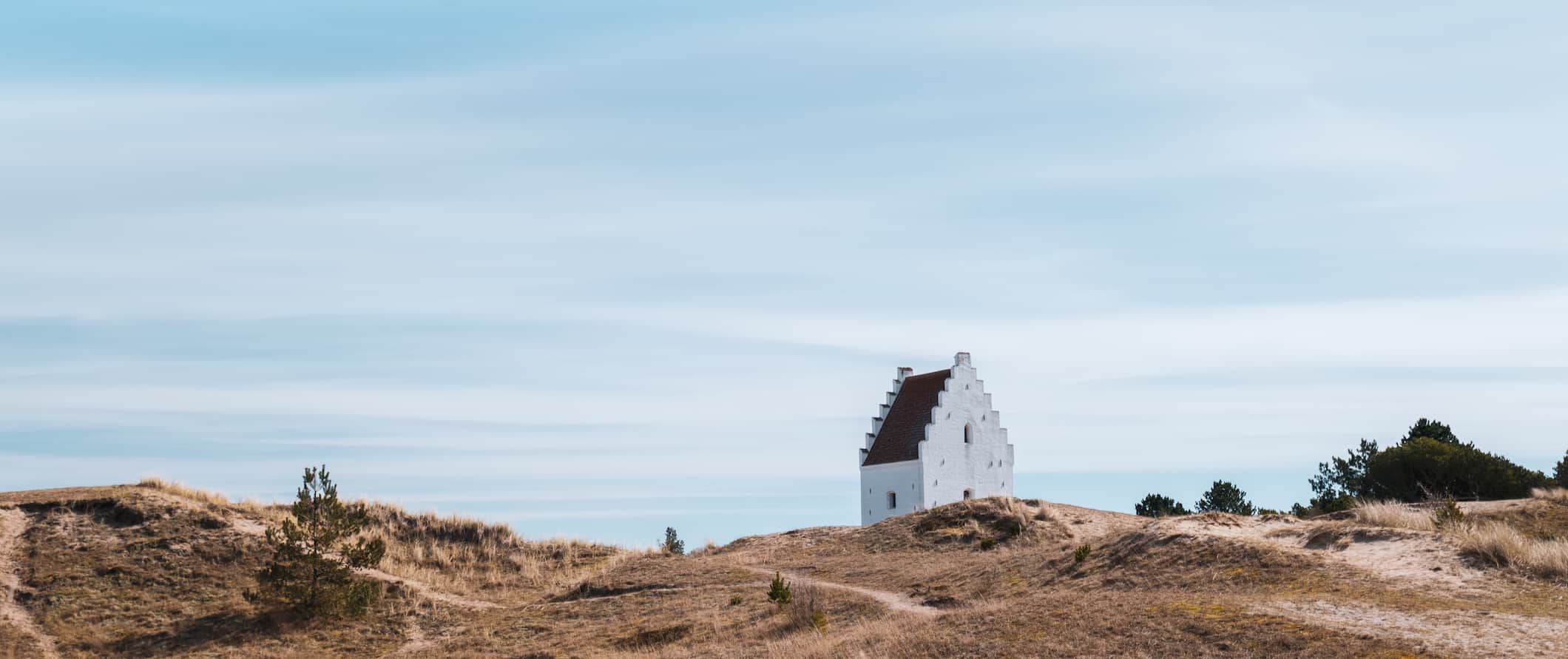
Public transportation – Public transportation in Denmark is clean, reliable, and safe. Tickets for public transportation cost around 24 DKK for a single fare. Unlimited tickets are also available and usually costing around 90 DKK for 24 hours. There are options for up to 72 hours.
The train from the airport to downtown Copenhagen is 36 DKK each way.
Bus – Flixbus is the most common way to travel around Denmark on a budget. A bus ride from Copenhagen to Aarhus starts at 70 DKK and takes 4 hours. A ride from Copenhagen to Odense starts around 70 DKK and takes just a little under two hours. A bus ride from Copenhagen to Hamburg, Germany starts at 150 DKK and takes between 5 and 7 hours, depending on the number of stops. Book early to secure a seat — especially in the summer.
To find bus routes and prices, use BusBud .
Train – The train is a bit more expensive than the bus but will take less time. A train ride from Copenhagen to Aarhus starts at 169 DKK and takes 2 hours and 45 minutes, while the ride from Aarhus to Aalborg starts at 94 DKK and takes about 1 and a half hours. From Copenhagen to Berlin, the 7-hour ride starts at around 675 DKK.
To find routes and prices for trains around Denmark (and Europe), use Trainline .
Flying – Denmark is a small country so domestic flights are unnecessary. You can travel by train from Copenhagen to Aarhus in 3 hours. A flight will be just 35 minutes, however, once you add on getting to and from the airport it doesn’t save any time (and a flight will cost you over 1,200 DKK — four times more expensive than the train!).
Car rental – If you’re staying a while in Denmark and doing a lot of city-hopping, a car is likely a cheaper alternative to buses and trains. You can find rentals for as little as 250 DKK per day. To rent a car in Denmark, you need to be 19 and have had your license for at least one year. For the best car rental prices, use Discover Cars .
Bicycle – Cycling is huge in Denmark. Bikes can be rented for around 125 DKK per day. Helmets are not included and cost 40 DKK extra. In Copenhagen, Donkey Republic (the city’s bike-share program) lets you rent bikes for as little as 15 minutes or for multiple days. One hour costs 36 DKK. Use the app to find bike locations near you. Every city has bike lanes and is cyclist-friendly.
Hitchhike – Hitchhiking in Denmark is easy (albeit uncommon). Since most of the population speaks English you won’t have a hard time communicating. Having your destination written on a sign will go a long way to help you secure a ride, as will showing a flag of where you’re from (people are more likely to pick up visitors). Check out Hitchwiki for more information.
When to Go to Denmark
Since Denmark is a peninsula and also has a few islands, the temperature is heavily influenced by the sea. Summers are mild and winters are cold. As with the rest of Scandinavia, expect long days in the summer and extra darkness in winter.
The best time to visit is in the shoulder season. The late spring and early autumn both offer decent weather with fewer crowds. It might rain a little, but you’ll find prices to be cheaper. While summer is when most tourists visit, there’s plenty to do all year. The weather can still be chilly with average highs between 6°C (43°F) in March and 16°C (61°F) in May so packing layers is a good idea.
Denmark has a lot of forests and fall is a great time to see the leaves changing colors on one of the many hiking trails around the country. Temperatures do start to drop and the average highs are between 17°C (63°F) in September and 7°C (46°F) in November so pack layers.
July and August are the most popular times to visit. High temperatures sit around 22°C (72°F) so the weather is perfect for outdoor activities and urban exploring. Book in advance if you visit during this time (especially in Copenhagen) as things can sell out. Expect prices to be a little higher during the summer as well.
Winters hover around 0°C (32°F), so dress warmly. Sunset is around 3pm so pack in as many outdoor activities as you can during the day if you plan on going then. While not the best time to visit for weather, there is still plenty to do and prices will be cheap. If you want to go for the holidays, booking in advance will help you save money.
Denmark Travel Guide: The Best Booking Resources
These are my favorite companies to use when I travel. They consistently have the best deals, offer world-class customer service and great value, and overall, are better than their competitors. They are the companies I use the most and are always the starting point in my search for travel deals.
- Skyscanner – Skyscanner is my favorite flight search engine. They search small websites and budget airlines that larger search sites tend to miss. They are hands down the number one place to start.
- Hostelworld – This is the best hostel accommodation site out there with the largest inventory, best search interface, and widest availability.
- Booking.com – The best all around booking site that constantly provides the cheapest and lowest rates. They have the widest selection of budget accommodation. In all my tests, they’ve always had the cheapest rates out of all the booking websites.
- HostelPass – This new card gives you up to 20% off hostels throughout Europe. It’s a great way to save money. They’re constantly adding new hostels too. I’ve always wanted something like this and glad it finallt exists.
- Get Your Guide – Get Your Guide is a huge online marketplace for tours and excursions. They have tons of tour options available in cities all around the world, including everything from cooking classes, walking tours, street art lessons, and more!
- The Man in Seat 61 – This website is the ultimate guide to train travel anywhere in the world. They have the most comprehensive information on routes, times, prices, and train conditions. If you are planning a long train journey or some epic train trip, consult this site.
- Rome2Rio – This website allows you to see how to get from point A to point B the best and cheapest way possible. It will give you all the bus, train, plane, or boat routes that can get you there as well as how much they cost.
- FlixBus – Flixbus has routes between 20 European countries with prices starting as low 5 EUR! Their buses include WiFi, electrical outlets, a free checked bag.
- SafetyWing – Safety Wing offers convenient and affordable plans tailored to digital nomads and long-term travelers. They have cheap monthly plans, great customer service, and an easy-to-use claims process that makes it perfect for those on the road.
- LifeStraw – My go-to company for reusable water bottles with built-in filters so you can ensure your drinking water is always clean and safe.
- Unbound Merino – They make lightweight, durable, easy-to-clean travel clothing.
- Top Travel Credit Cards – Points are the best way to cut down travel expenses. Here’s my favorite point earning credit cards so you can get free travel!
GO DEEPER: Nomadic Matt’s In-Depth Budget Guide to Europe!

There’s a lot of free information online but do you want to spend days searching for information? Prob not! That’s why guidebooks exist.
While I have a lot of free tips on Europe, I also wrote an entire book that goes into great detail on everything you need to plan a trip here on a budget! You’ll get suggested itineraries, budgets, even more ways to save money, my favorite restaurants, prices, practical information (i.e. phone numbers, websites, prices, safety advice, etc etc), and cultural tips.
I’ll give the insider view of Europe that I got from years of traveling and living here! The downloadable guide can be used on your Kindle, iPad, phone, or computer so you can have it with you when you go. Click here to learn more about my book on Europe!
Denmark Travel Guide: Related Articles
Want more tips for your trip? Check out all the articles I’ve written on Denmark travel and continue planning your trip:
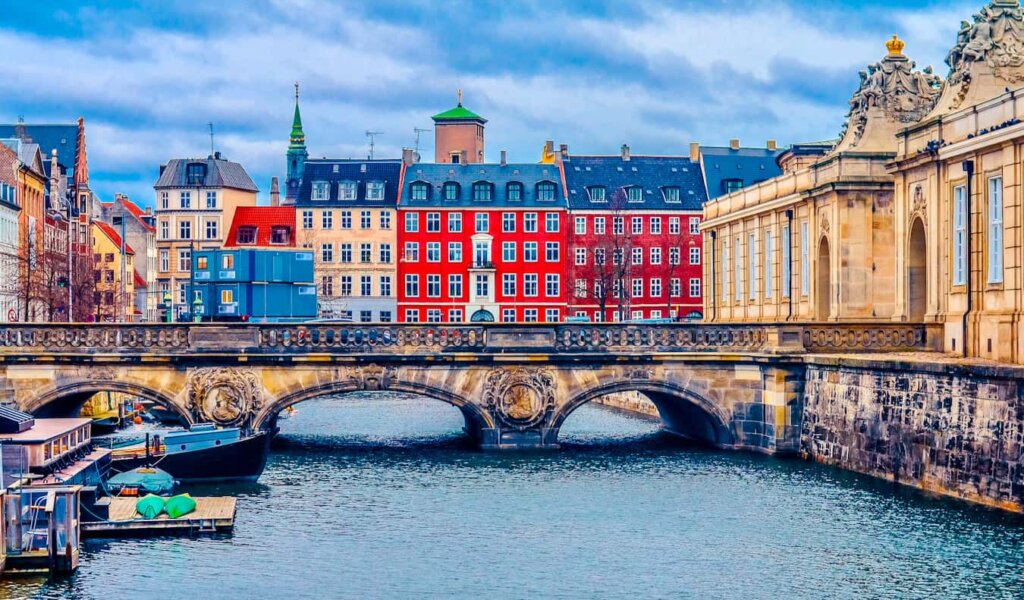
The 6 Best Hotels in Copenhagen
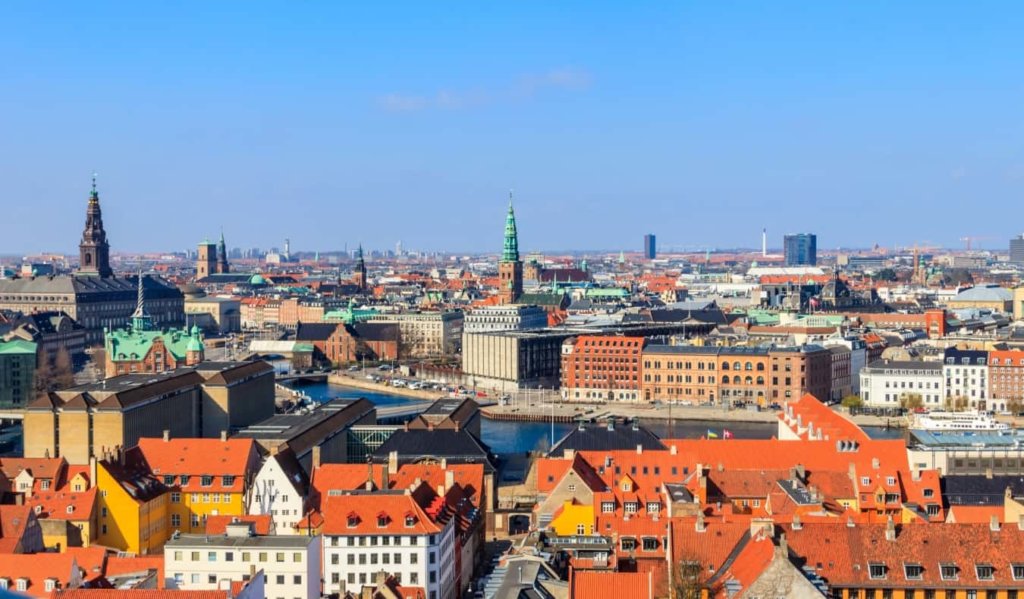
Where to Stay in Copenhagen: The Best Neighborhoods for Your Visit
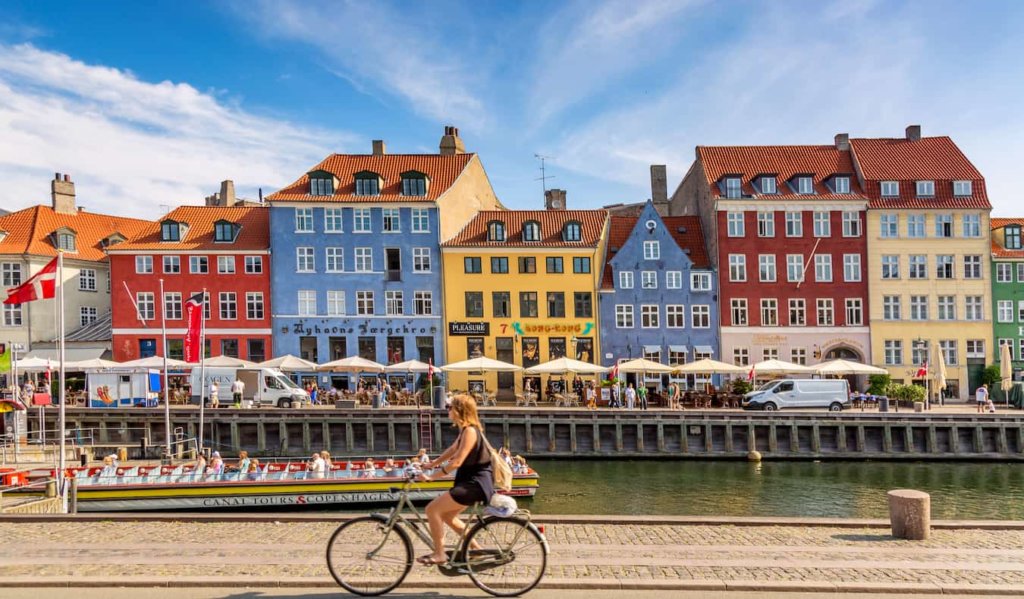
The 6 Best Hostels in Copenhagen
Get your free travel starter kit.
Enter your email and get planning cheatsheets including a step by step checklist, packing list, tips cheat sheet, and more so you can plan like a pro!

- Where To Stay
- Transportation
- Booking Resources
- Related Blogs
No videos yet!
Click on "Watch later" to put videos here
Denmark Travel Guide – Everything You Need to Know

Welcome to Denmark, a land of enchanting fairy tales, picturesque landscapes, and timeless charm. Nestled in Northern Europe, Denmark is a nation where modernity seamlessly blends with centuries-old history and culture. Explore the colorful streets of Copenhagen, Denmark’s vibrant capital, or venture into the countryside adorned with rolling hills and serene coastlines. Discover the birthplace of Hans Christian Andersen, the famous storyteller, and indulge in Danish culinary delights like smørrebrød (open-faced sandwiches) and flæskesteg (roast pork). Whether you’re strolling through the charming Nyhavn district or experiencing the magic of Tivoli Gardens, Denmark offers a warm welcome to all who seek a blend of old-world elegance and contemporary wonder. Your Danish adventure awaits!
What’s the Best Time to Visit? 📅
The best time to visit Denmark as a tourist largely depends on your preferences for weather, activities, and the type of experience you seek. Denmark experiences distinct seasons, each offering its own unique charm:
- Spring (April to June):
- Spring is a beautiful time to visit Denmark as the landscape comes to life with colorful flowers and blossoming trees.
- Temperatures start to warm up, and you’ll find pleasant weather for outdoor activities.
- May is particularly lovely with longer days and milder temperatures.
- Spring is a great time for exploring cities, gardens, and coastal areas.
- Summer (June to August):
- Summer is the peak tourist season in Denmark. The weather is warm, and daylight hours are long, allowing for extended exploration.
- This is the best time for outdoor activities, beach visits, and festivals.
- The popular Tivoli Gardens in Copenhagen are in full swing during the summer months.
- Expect larger crowds and higher prices for accommodations, especially in tourist hotspots.
- Autumn (September to November):
- Autumn brings beautiful foliage as the leaves change color, creating a picturesque landscape.
- September is a pleasant month with mild temperatures and fewer tourists.
- It’s a good time for exploring historic sites, museums, and hiking in national parks.
- The end of November marks the beginning of the Christmas season, with festive markets and decorations.
- Winter (December to February):
- Winter in Denmark is cold, with shorter days and chilly temperatures.
- It’s an ideal time for experiencing Danish hygge, with cozy indoor activities like enjoying hot chocolate and visiting museums.
- Christmas markets and decorations create a festive atmosphere, particularly in cities like Copenhagen and Aarhus.
- If you’re interested in winter sports or the Northern Lights, consider visiting northern Denmark or the Faroe Islands during this season.
Ultimately, the best time to visit Denmark depends on your interests and what you’d like to experience. If you prefer warm weather and vibrant outdoor activities, summer is ideal. Spring and autumn offer a balance of pleasant weather and fewer crowds. Winter is perfect for embracing the Danish concept of hygge and enjoying the holiday season. Regardless of the season, Denmark’s rich cultural heritage, stunning landscapes, and warm hospitality are sure to make your visit memorable.
What’s the Best Way to Get Around? 🚌
Getting around Denmark as a tourist is convenient and efficient, thanks to the country’s well-developed transportation network. Here are the best ways to get around Denmark:
- Public Transportation (Trains and Buses):
- Denmark has an excellent public transportation system, including trains, buses, and local trams, especially in cities like Copenhagen, Aarhus, and Odense.
- Trains are the fastest and most comfortable way to travel between cities. The national rail company, DSB, operates regular services connecting major cities.
- Buses and trams are convenient for getting around within cities and to smaller towns. The Rejsekort card can be used for seamless travel on various modes of public transport.
- Metro: Copenhagen has a modern metro system with multiple lines, making it easy to navigate the city quickly and efficiently.
- Denmark is a bike-friendly country with extensive cycling paths and bike lanes. Many cities offer bike rental services, making it a convenient and eco-friendly way to explore urban areas and scenic countryside.
- Car Rental:
- Renting a car can be a good option if you plan to explore rural areas, visit remote attractions, or have the flexibility to travel on your own schedule.
- Keep in mind that Denmark has strict traffic rules, and parking in city centers can be challenging and expensive.
- Ferries and Bridges:
- Denmark consists of several islands, and ferries and bridges connect many of them. For example, the Oresund Bridge connects Copenhagen to Malmo, Sweden, and the Great Belt Bridge connects the eastern and western parts of Denmark.
- Taxis and Ride-Sharing:
- Taxis are readily available in cities and are a convenient option for short trips within urban areas. Ride-sharing services like Uber operate in some Danish cities.
- Domestic Flights:
- While Denmark is a relatively small country, domestic flights are available for traveling between distant regions, such as between Copenhagen and the Faroe Islands.
- Copenhagen Card:
- If you plan to spend a significant amount of time in Copenhagen, consider purchasing the Copenhagen Card, which offers unlimited use of public transportation and free or discounted admission to many attractions.
- Denmark’s cities are pedestrian-friendly, with well-maintained sidewalks and pedestrian zones. Walking is an excellent way to explore urban areas and discover hidden gems.
When choosing your mode of transportation, consider factors such as your itinerary, the distance you need to cover, and the places you want to visit. Denmark’s efficient and reliable transportation options make it easy for tourists to explore the country’s cities, countryside, and coastal regions with ease.
What’s the Official Language?
The official language of Denmark is Danish. However, English is widely spoken and understood throughout the country, especially in tourist areas, making it easy for travelers to communicate. Nevertheless, learning a few basic Danish words and phrases can be appreciated by locals and enhance your travel experience. Here are some common Danish words and phrases for tourists:
- Hello: Hej (pronounced “hi”)
- Good morning: God morgen (pronounced “goh MOR-gen”)
- Good afternoon: God eftermiddag (pronounced “goh eh-ter-MEE-dahg”)
- Good evening: God aften (pronounced “goh AHF-ten”)
- Goodbye: Farvel (pronounced “FAHR-vel”) or Hej hej (pronounced “hi hi”)
- Please: Vær så venlig (pronounced “vayr soh VEN-lee”)
- Thank you: Tak (pronounced “tahk”)
- Yes: Ja (pronounced “ya”)
- No: Nej (pronounced “nay”)
- Excuse me / Sorry: Undskyld (pronounced “OON-skuld”)
- How much is this?: Hvor meget koster det? (pronounced “voer MEY-et KOS-ter deht?”)
- Where is…?: Hvor er…? (pronounced “voer er…?”)
- I don’t understand: Jeg forstår ikke (pronounced “yei for-STOHR ee-uh”)
- Help: Hjælp (pronounced “yelp”)
- Restroom: Toilet (pronounced “toilet”)
- Water: Vand (pronounced “vahn”)
- Food: Mad (pronounced “mad”)
- Beer: Øl (pronounced “ool”)
- Cheers: Skål (pronounced “skohl”)
- Numbers: Learn basic numbers, such as one (en), two (to), three (tre), etc., to help with ordering and understanding prices.
Danish pronunciation can be challenging, but don’t be discouraged. Danes are generally appreciative when tourists make an effort to use a few local phrases. However, you’ll find that most Danes are fluent in English and can switch to English to assist you if needed.
Where to Stay? 🏨
Denmark offers a wide range of accommodation options for tourists, catering to various preferences and budgets. Whether you’re interested in staying in a vibrant city, charming countryside, or coastal town, you’ll find suitable places to stay. Here are some popular choices for where to stay in Denmark as a tourist:
- Copenhagen: The capital city, Copenhagen, offers a diverse selection of accommodations, including hotels, hostels, boutique hotels, and vacation rentals. Popular neighborhoods to consider are:
- Indre By (City Center): Ideal for exploring historic sites like the Tivoli Gardens and the Little Mermaid.
- Vesterbro: Known for its trendy vibe, restaurants, and nightlife.
- Nørrebro: A hip neighborhood with a multicultural atmosphere and a range of dining options.
- Frederiksberg: A leafy district with elegant streets, parks, and shopping.
- Aarhus: Denmark’s second-largest city, Aarhus, boasts a mix of cultural attractions and beautiful coastline. You can find hotels, guesthouses, and apartments in and around the city center.
- Odense: Known as the birthplace of Hans Christian Andersen, Odense offers a blend of history and culture. Consider staying in the city center or near the historic old town.
- Skagen: Located at the northern tip of Jutland, Skagen is famous for its scenic beaches and unique light. There are hotels, cottages, and guesthouses in this coastal town.
- Ålborg: Aalborg, in northern Denmark, is known for its vibrant cultural scene. You’ll find a range of accommodation options, particularly in the city center.
- Rural Areas: If you prefer a quiet retreat in the Danish countryside, look for rural accommodations like farm stays, cottages, and bed-and-breakfasts. The Danish countryside offers peace and tranquility.
- Coastal Towns: Denmark has a beautiful coastline with picturesque fishing villages. Consider staying in towns like Helsingør, Horsens, or Køge for a coastal experience.
- Lighthouses: For a unique experience, some Danish lighthouses have been converted into accommodations. Staying in a lighthouse provides stunning sea views and a memorable experience.
- Islands: Denmark has numerous islands, and some offer accommodations ranging from luxury resorts to cozy inns. Consider exploring islands like Funen, Lolland, or Bornholm.
- Camping: Camping is popular in Denmark, and there are well-equipped campgrounds throughout the country. If you enjoy camping, this can be an economical and adventurous option.
- Historic Inns: Denmark has charming historic inns and manor houses that offer a taste of traditional Danish hospitality.
When choosing where to stay in Denmark, consider factors such as your travel itinerary, the type of experience you desire, and your budget. It’s advisable to book accommodations in advance, especially during the peak tourist season in the summer months. Denmark’s varied lodging options ensure that you can find the perfect place to stay, whether you’re seeking urban excitement, coastal relaxation, or rural tranquility.
What to Eat? 🍽️
Exploring Danish cuisine is a delightful experience for tourists, with a mix of traditional dishes and modern Nordic flavors. Here are some must-try foods when visiting Denmark:
- Smørrebrød: Danish open-faced sandwiches are a culinary staple. These artfully crafted sandwiches consist of a slice of dense rye bread (rugbrød) topped with various ingredients like herring, cold cuts, pickles, and egg salad. Try varieties like “Frikadeller” (meatball), “Leverpostej” (liver pâté), and “Stjerneskud” (star sandwich with fish).
- Frikadeller: Danish meatballs are typically made from a mixture of ground pork and veal, seasoned with spices, and pan-fried. They’re often served with potatoes, gravy, and lingonberry sauce.
- Smoked Fish: Denmark’s coastal location makes it an excellent place to enjoy smoked fish. Try “Røget laks” (smoked salmon) or “Røget ål” (smoked eel).
- Fish and Seafood: Explore the Danish coastline with dishes like “Stegt rødspætte” (pan-fried plaice), “Fiskefilet med remoulade” (fish fillet with remoulade sauce), or “Gravad laks” (cured salmon).
- Rødgrød med fløde: A classic Danish dessert, this is a red berry compote served with cream (fløde) on top. It’s refreshing and a taste of summer.
- Danish Pastries (Wienerbrød): Indulge in the world-famous Danish pastries, known locally as “Wienerbrød.” Try “kanelsnegle” (cinnamon rolls), “spandauer” (danishes with various fillings), and “kringle” (sweet pretzel-shaped pastries).
- Æbleskiver: These round, fluffy, and pancake-like balls are a favorite treat during the Christmas season. They’re often served with powdered sugar and raspberry jam.
- Koldskål: A chilled buttermilk dessert soup often enjoyed in the summertime. It’s sweetened with sugar and flavored with vanilla and lemon.
- Flæskesteg: A traditional Danish roast pork dish, typically served with crispy crackling, red cabbage, and gravy. It’s a popular choice for Christmas.
- Danish Cheese: Denmark is known for its excellent cheese, including varieties like “Danablu” (blue cheese), “Gamle Ole” (aged cheese), and “Havarti.”
- Hotdogs (Pølsevogn): Try a Danish hotdog from a street vendor (pølsevogn) topped with mustard, ketchup, remoulade sauce, pickles, and crispy onions.
- Leverpostej: Liver pâté is often spread on bread and served with pickles, beets, and mustard.
- Æbleflæsk: A traditional Danish dish made with fried bacon and apples, often served with potatoes.
- Brunsviger: A sweet, sticky cinnamon and brown sugar cake, typically enjoyed with a cup of coffee.
- Danish Beer: Denmark has a thriving craft beer scene, so be sure to sample some local brews, including classic lagers and innovative ales.
- Schnapps: Enjoy a glass of Danish schnapps, often flavored with herbs or spices, as an accompaniment to traditional Danish dishes.
Exploring Danish cuisine allows you to savor the flavors of the region while immersing yourself in the country’s culinary traditions. Whether you’re dining in a cozy café, exploring street food markets, or enjoying a meal in a traditional Danish restaurant, there’s no shortage of delicious food to try in Denmark.
What to See? 🔍
Denmark offers a wealth of must-see places that showcase its rich history, stunning natural beauty, and vibrant culture. Here are some top destinations and attractions for tourists:
- Copenhagen: Denmark’s capital city is a treasure trove of attractions, including:
- Tivoli Gardens: A historic amusement park with rides, entertainment, and beautiful gardens.
- The Little Mermaid: A beloved statue inspired by Hans Christian Andersen’s fairy tale.
- Nyhavn: A picturesque waterfront area lined with colorful buildings, restaurants, and bars.
- Rosenborg Castle: A well-preserved Renaissance castle housing the Danish crown jewels.
- The Round Tower (Rundetårn): An iconic observatory with panoramic views of the city.
- Kronborg Castle: Located in Helsingør (Elsinore), this UNESCO World Heritage site is known as the setting for Shakespeare’s “Hamlet.” Explore the historic fortress and its scenic coastal surroundings.
- Frederiksborg Castle: Situated in Hillerød, this Renaissance palace is home to the Danish Museum of National History. The castle’s gardens and lake add to its charm.
- Roskilde: Visit the ancient city of Roskilde, known for its stunning cathedral (Roskilde Domkirke) and the Viking Ship Museum, where you can see well-preserved Viking ships.
- Aarhus: Denmark’s second-largest city offers cultural gems like the ARoS Aarhus Art Museum, Moesgaard Museum, and the historic old town of Den Gamle By.
- Legoland Billund: Ideal for families, Legoland Billund features themed rides, attractions, and a vast collection of Lego creations.
- Bornholm: Explore this picturesque island in the Baltic Sea, known for its stunning beaches, medieval ruins, and quaint villages.
- Faroese Islands: If you have extra time, consider taking a ferry or flight to the Faroese Islands, an autonomous territory of Denmark, known for its dramatic landscapes and outdoor adventures.
- North Jutland: Discover the beautiful landscapes of North Jutland, including the shifting sands of Råbjerg Mile and the charming town of Skagen.
- Møns Klint: Witness the awe-inspiring white chalk cliffs of Møn Island, known for their dramatic beauty and fossil-rich shores.
- Egeskov Castle: Located on Funen Island, Egeskov Castle is a well-preserved Renaissance castle with picturesque gardens and a range of museums.
- Ribe: Step back in time in Denmark’s oldest town, Ribe, known for its well-preserved medieval architecture and the Ribe Viking Center.
- National Parks: Denmark boasts several national parks, including Wadden Sea National Park and Thy National Park, offering opportunities for hiking, wildlife watching, and outdoor adventures.
- Koldinghus: Explore this historic castle in Kolding, featuring art exhibitions, gardens, and impressive architecture.
- Marselisborg Palace: Located in Aarhus, this palace is the summer residence of the Danish royal family and is surrounded by a beautiful park.
These are just a few of the many incredible places to visit in Denmark. Whether you’re interested in history, culture, natural beauty, or family-friendly attractions, Denmark has something to offer every type of traveler.
What to Do? 📸
Denmark offers a wide range of activities and experiences for tourists, ensuring a memorable and enriching visit. Here are some must-do things when exploring Denmark as a tourist:
- Copenhagen Bike Tour: Discover the city like a local by renting a bike and exploring Copenhagen’s charming neighborhoods, historic sites, and picturesque canals.
- Cruise the Canals: Take a canal boat tour in Copenhagen to view the city’s landmarks from the water, including the famous Little Mermaid statue.
- Visit a Danish Castle: Explore one of Denmark’s many historic castles, such as Kronborg Castle in Helsingør or Frederiksborg Castle in Hillerød.
- Try Danish Pastries: Savor the world-famous Danish pastries, including “kanelsnegle” (cinnamon rolls) and “spandauer” (danishes).
- Taste Nordic Cuisine: Sample Nordic cuisine at a local restaurant, trying dishes like smørrebrød (open-faced sandwiches) and herring.
- Explore Viking History: Visit the Viking Ship Museum in Roskilde to learn about Denmark’s Viking heritage and see well-preserved Viking ships.
- Attend a Danish Festival: Experience Danish culture by attending a local festival or event, such as the Aarhus Festival or the Roskilde Festival.
- Walk the Old Towns: Stroll through the historic old towns of cities like Aarhus, Ribe, and Odense to soak in the medieval charm.
- Visit Legoland: If traveling with family, spend a day at Legoland Billund, a theme park dedicated to the iconic toy bricks.
- Embrace Hygge: Experience “hygge,” the Danish concept of coziness and contentment, by enjoying a warm drink at a cozy café or exploring a candlelit Christmas market.
- Explore Bornholm: Take a ferry to Bornholm Island to explore its unique landscapes, including stunning beaches and dramatic cliffs.
- Visit an Art Museum: Explore Denmark’s art scene at museums like ARoS Aarhus Art Museum or the Louisiana Museum of Modern Art.
- Enjoy Danish Beaches: Relax on Denmark’s beautiful beaches, such as Skagen’s Grenen Beach or the sandy shores of the Danish Riviera.
- Taste Danish Beer: Try local Danish beers at breweries or pubs, and savor craft brews, lagers, and ales.
- Experience Midsummer: If visiting in June, join the Danes in celebrating Midsummer (Sankt Hans) with bonfires, music, and traditional rituals.
- Visit Hans Christian Andersen’s House: Explore the museum dedicated to the famous Danish fairy tale author in Odense.
- Go Birdwatching: Denmark is a great place for birdwatching, especially along the Wadden Sea coast, where you can spot migratory birds.
- Enjoy Live Music: Attend a live music performance, whether it’s classical music, jazz, or contemporary Danish bands.
- Take a Day Trip to Sweden: Cross the Oresund Bridge from Copenhagen to visit Malmö, Sweden, for a day of exploration.
- Stay in a Danish Cottage: Experience the Danish countryside by renting a cottage or cabin in rural areas.
These activities and experiences allow you to immerse yourself in Denmark’s culture, history, and natural beauty, ensuring a memorable and enriching journey in this Nordic gem.
Culture and Safety 🦺
Traveling to Denmark offers a safe and culturally rich experience, thanks to the country’s well-developed infrastructure, low crime rate, and friendly population. Here are some insights into the culture and safety considerations when visiting Denmark:
- Hygge: Embrace the Danish concept of “hygge,” which is all about creating a cozy, comfortable, and content atmosphere. It’s often associated with enjoying simple pleasures, like warm drinks by the fireplace or quality time with loved ones.
- Punctuality: Danes value punctuality, so make an effort to arrive on time for appointments, tours, and meetings.
- Tolerance and Equality: Denmark is known for its progressive attitudes, tolerance, and strong commitment to gender equality and LGBTQ+ rights.
- Respect for Nature: Danish culture places great importance on respecting nature. Follow “everyman’s rights,” which allow people to enjoy the countryside responsibly, but also leave it as you found it.
- Personal Space: Danes value personal space and tend to maintain a comfortable distance when interacting. Respect this cultural norm, especially in crowded places.
- Tipping: Tipping is customary but not obligatory. In restaurants, rounding up the bill or leaving a 10% tip is common.
- Language: While Danish is the official language, English is widely spoken and understood. Learning a few basic Danish phrases can be appreciated by locals.
- Low Crime Rate: Denmark is considered one of the safest countries in the world, with low rates of violent crime. However, like in any destination, be cautious of petty theft in crowded tourist areas and keep an eye on your belongings.
- Traffic Safety: Denmark has strict traffic regulations, and road safety is a priority. If you plan to drive, obey speed limits and traffic rules, and be prepared for winter driving conditions if visiting during colder months.
- Emergency Numbers: The emergency number for police, fire, and medical assistance is 112.
- Weather Awareness: Be prepared for Denmark’s changeable weather, which can include rain and wind. Dress accordingly and check the weather forecast.
- Healthcare: Denmark has a high standard of healthcare, and emergency medical services are readily available. European Health Insurance Card (EHIC) holders receive necessary medical care, but it’s advisable to have comprehensive travel insurance covering medical emergencies.
- COVID-19 Precautions: Stay informed about COVID-19 regulations and follow local guidelines regarding mask mandates, social distancing, and vaccination requirements.
- Wildlife Safety: When venturing into Denmark’s wilderness areas, be aware of wildlife, such as deer, which can sometimes appear on roads. Drive carefully and be cautious.
Denmark offers a warm and welcoming atmosphere for tourists, with a strong emphasis on culture, safety, and the well-being of its visitors. By respecting local customs, following safety guidelines, and enjoying the Danish way of life, you can have a fantastic and secure travel experience in this Scandinavian country.
In conclusion, a visit to Denmark promises an unforgettable journey through a land where fairy tales come to life, history whispers through cobblestone streets, and the beauty of nature captivates the soul. From the vibrant streets of Copenhagen to the tranquility of the countryside, Denmark offers a delightful blend of culture, history, and natural wonders. Savor Danish cuisine, explore historic castles, and embrace the Danish concept of hygge, a unique kind of coziness and contentment. With its welcoming atmosphere and timeless charm, Denmark invites you to create lasting memories and experience the best of Nordic hospitality. Velkommen til Danmark! (Welcome to Denmark!)
You may also like

State of Palestine Travel Guide – Everything You Need to Know

South Sudan Travel Guide – Everything You Need to Know

Democratic Republic of the Congo Travel Guide – Everything You Need to Know
Travel destinations.
- Experiencing Australia 20
- Experiencing Cambodia 5
- Experiencing China 24
- Experiencing Cruise 6
- Experiencing France 5
- Experiencing Germany 3
- Experiencing Indonesia 10
- Experiencing Italy 11
- Experiencing Japan 10
- Experiencing Korea 7
- Experiencing Malaysia 6
- Experiencing Maldives 7
- Experiencing Myanmar 10
- Experiencing New Zealand 17
- Experiencing Singapore 15
- Experiencing Switzerland 4
- Experiencing Taiwan 14
- Experiencing Thailand 18
- Experiencing Vietnam 5

Get to know Copenhagen, the capital of Denmark
Your guide to the perfect copenhagen experience.
The buzzing capital of Denmark mixes modern architecture and culture with sustainable living , royal history , and a mouthwatering restaurant scene . Get to know the city, do your planning, and find all your questions answered right here.
To get a daily dose of inspiration, please follow @VisitCopenhagen on Instagram.
Tell us what you're looking for
Are you already in Copenhagen? Are you planning your trip or looking to get inspired to what to do today? We got you covered.
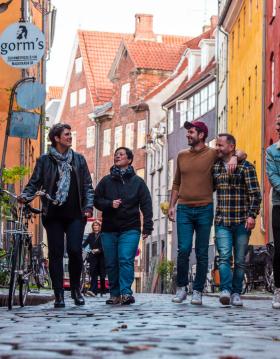
I'm curious about Copenhagen
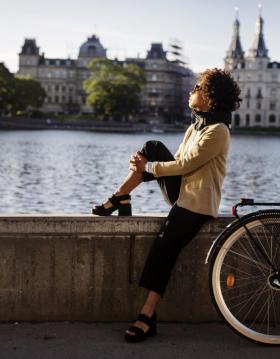
I'm planning my trip
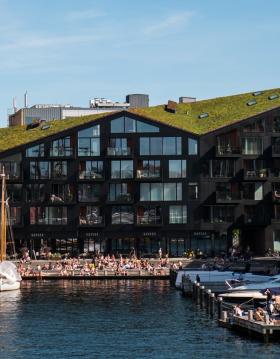
I'm looking for experiences
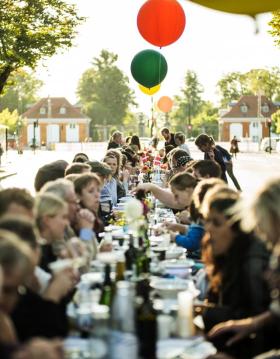
I want to check out events
Start exploring.
Any season is a good season to explore Copenhagen, whether on foot, on bike or sailing your own electric boat through the canals.
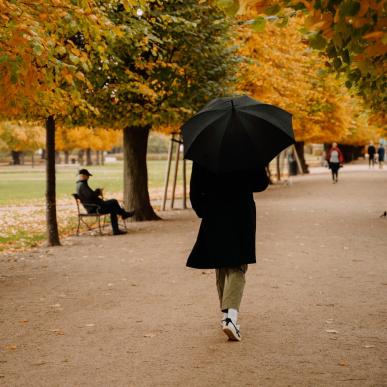
You can't miss autumn in Copenhagen

#TinToCPH: Be in to win a trip to Copenhagen
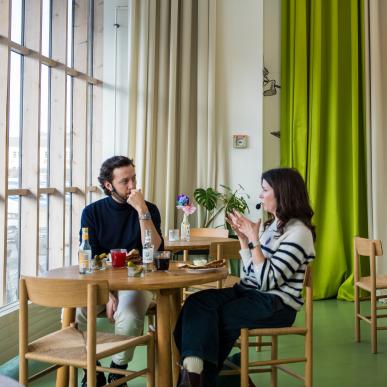
Listen to our new podcast
Copenhagen is buzzing all year around.
Copenhagen is blessed with four very distinct seasons each with their own special flavour. Whether you're looking for a vibrant summer vibe, colourful autumn, cosy winter or beautiful spring - Copenhagen is incredible no matter the time of year.
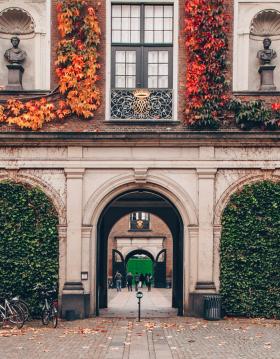
It's in everything we do
Copenhagen strives to be a city that is not only a cool place to visit but also a great place to live. This is why we take sustainability, livability, and safety very seriously.
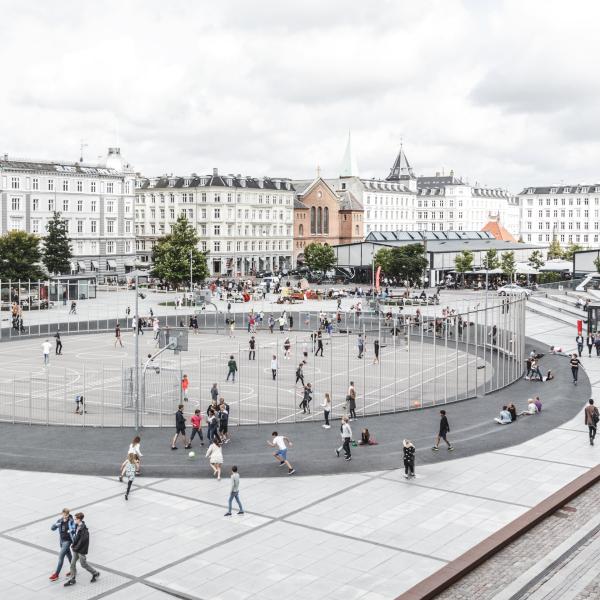
Safety in Copenhagen
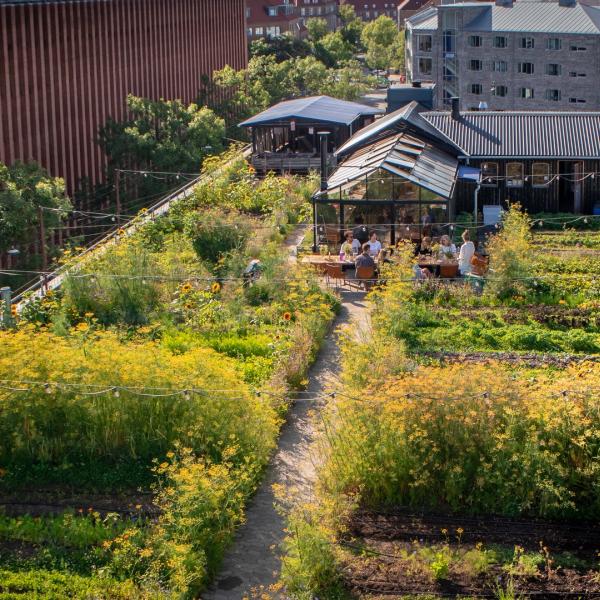
Sustainability guide
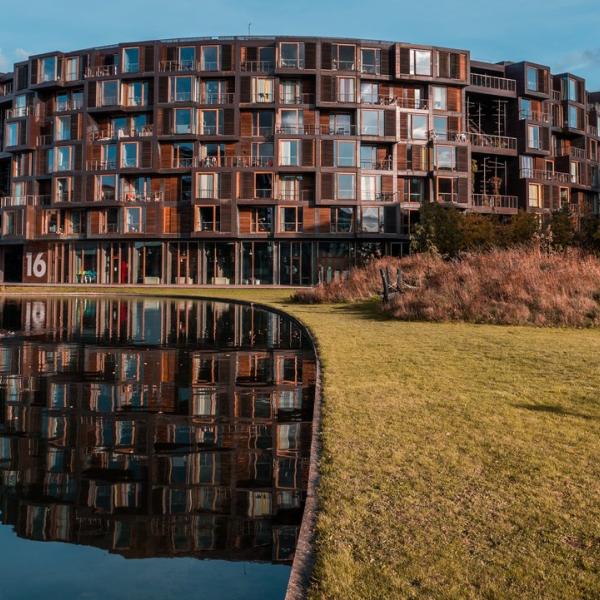
World Capital of Architecture
Insights from your local copenhageners.
Get local tips for great experiences with Copenhagen Unfolded. Culture, food, design, history, and events - straight to your inbox once a month.
Get Social :
Useful links.
- Web Accessibility
- Editorial policy
Other sites
- Wonderful Copenhagen
- Cruise Denmark – Copenhagen and beyond
- Copenhagen Convention Bureau
- Travel Trade
- Copenhagen Card
- Intl. press room

7 Day DENMARK Itinerary (2024)
By Author Katie
Posted on Last updated: July 22, 2024
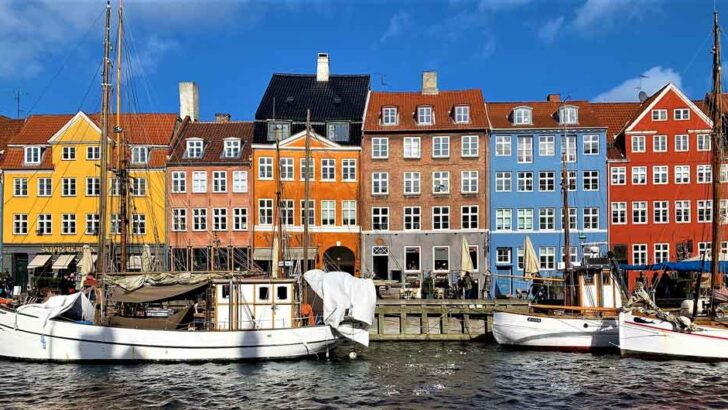
This Denmark itinerary covers the best places to visit in Denmark in just a week, perfect for those planning their first trip to Denmark.
Denmark is known for its rich history and picturesque landscapes, making it a popular place for visitors to explore. From the iconic little Mermaid Statue in Copenhagen to the fairy-tale-like castles found all over the country, there is plenty to sweep you away whilst in the country.
When Calum and I first planned a trip to Denmark, we had no clue where to begin! We reached out to fellow bloggers for ideas and fortunately, Marjut put together the perfect one week Denmark itinerary, so we could see the best sights and not miss a thing!
Marjut from The Smooth Escape shares a Denmark Itinerary – perfect for a week in Copenhagen and beyond.
Why Denmark?
Denmark, the smallest of the Scandinavian countries and one of the happiest nations in the world will charm you with its medieval towns, beautiful castles, and scenic countryside.
Based on my experience with living in Denmark for almost a decade, I’ve put together a 7-day Denmark itinerary that includes both must-see attractions as well as lesser-known treasures in this amazing country.
One week is just enough to explore the main sights of Denmark’s vibrant capital city Copenhagen and take a few day trips to smaller towns such as Helsingør and Dragør which are packed with culture and history; this is how we recommend you spend time in Copenhagen .
To ensure that you’ll have enough time to thoroughly enjoy your trip without having to rush from one place to another, this Denmark itinerary is limited to the eastern part of Denmark (Zealand) only, which in my opinion is the most enchanting region in the whole country.
Without further ado, let’s have a look at some of the most beautiful places to explore during a weeklong stay in Denmark!
7 Days Denmark Itinerary
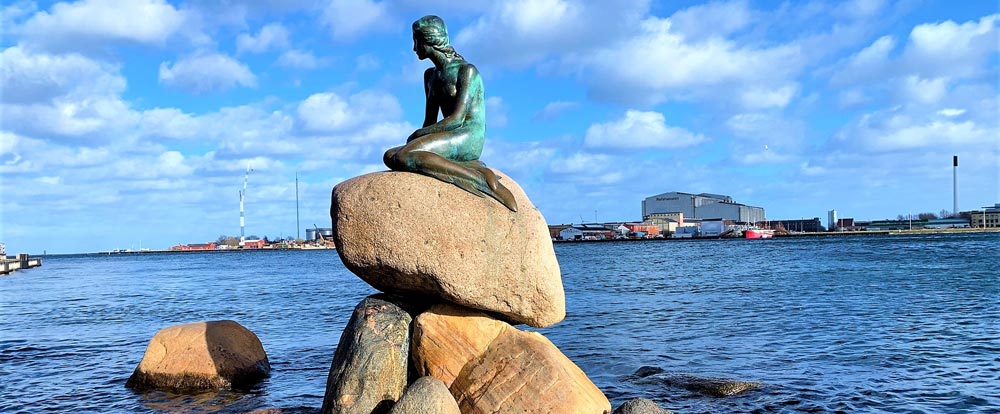
Denmark itinerary – Day 1: Copenhagen
Start your Denmark itinerary by visiting some of Copenhagen’s most iconic sights and landmarks; we recommend spending at least 3 days in the city, to see all of your Copenhagen bucket list attractions. This is one of the most romantic destinations in Europe , making it the perfect place for couples.
Begin your Denmark itinerary by heading to the gloriously photogenic Nyhavn which is a port lined with colorful quaint houses and old sailing boats.
Whether you choose to just snap photos of the buildings, grab a bite in one of the many quayside restaurants, or stroll along the port, Nyhavn is an absolute must when you’re in Copenhagen.
Next, visit Amalienborg Palace , the residence of the Danish Royal Family. The palace consists of four identical buildings with a large courtyard in the middle. To experience the changing of The Royal Guard, make sure to be at the central courtyard at noon.
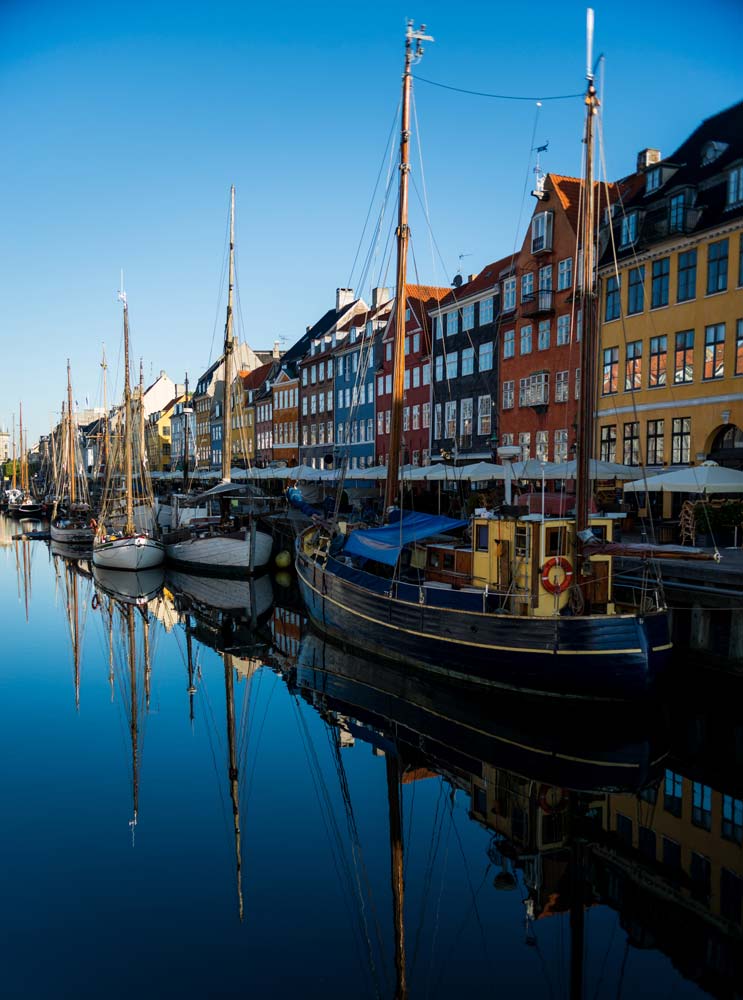
After that, head to Frederik’s Church , also known as the Marble Church sitting right next to Amalienborg Palace.
With its massive green dome, this beautiful church stands out from the Copenhagen skyline and can be spotted in many parts of the city. As it’s free to enter the church, I recommend taking a quick look to admire its interior.
From there, walk to the Gefion Fountain , a large and impressive monument built in 1908. Topped by a statue of the Norse goddess Gefion , the fountain depicts a mythical story about the creation of the island of Zealand on which Copenhagen lies.
Just a short stroll from the fountain sits The Little Mermaid – a bronze statue created based on the world-famous fairy tale by the Danish author Hans Christian Andersen.
Once you see the iconic statue, you might find it a tad underwhelming since it’s smaller than what most tourists expect. Nevertheless, you should pay a visit to The Little Mermaid as it’s one of Copenhagen’s most famous attractions and is often seen as the symbol of the country.
Plus, the waterfront promenade leading to the statue is a lovely place to walk and offers some great views over the canal.
Head to the Copenhagen Christmas markets during the Winter and check out Copenhagen’s hidden gems and unusual things to do once you have seen all the sights.
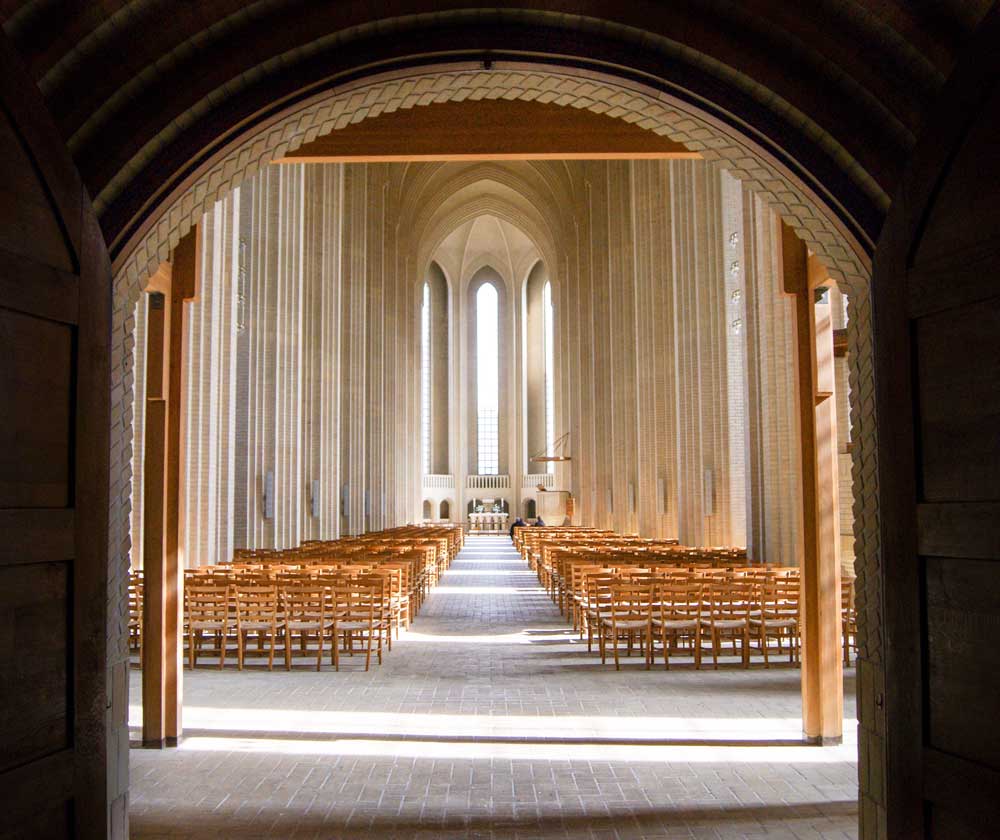
Day 2: Copenhagen
Kick off the second day with a walk in Copenhagen’s oldest park, the King’s Garden . The park contains vast lawns, flower beds, and a rose garden, making it an attractive place to visit during the spring or summer months. This makes for a peaceful, calmer beginning to your Denmark itinerary.
King’s Garden is also home to Rosenborg Castle where you can see the crown jewels of Danish royalty.
Next, head to Torvehallerne , which is a buzzing food market consisting of two modern glass halls with countless stands serving high-quality fresh produce, pastries, chocolates, liquor, fish, nuts, cheeses, and lots of other delicacies.
Besides the market stands, there are also many restaurants and cafeterias serving everything from tapas to porridge, from sushi to pizza, and the typical Danish open sandwiches called smørrebrød . If you’re a foodie, this place is your paradise.
Once you’ve eaten your way through Torvehallerne , take a walk on the bustling pedestrian streets in the heart of Copenhagen.
The longest and most well-known of them is Strøget but you should also check out Købmagergade and Fiolstræde . These streets are lined with an abundance of cafeterias, bars, and shops selling both international and local brands.
Make sure to stop at Amagertorv Square which is an excellent place to people-watch and enjoy the performances of street musicians.
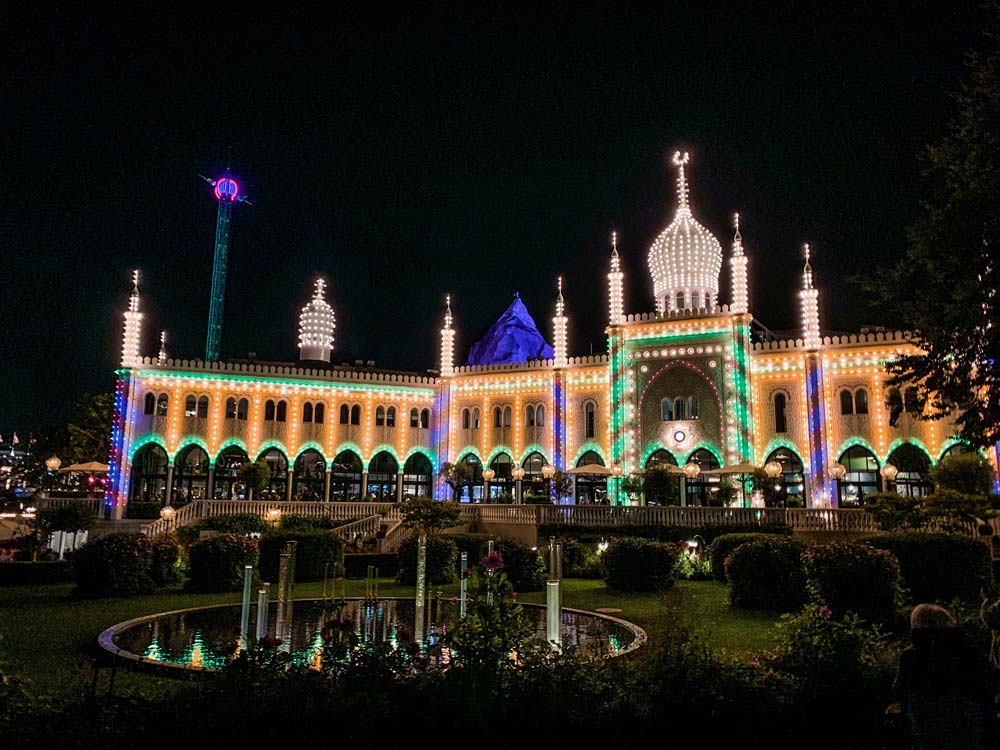
Finish your day with a trip to the world’s second-oldest amusement park and one of the most fascinating attractions in Copenhagen – the Tivoli Gardens . Even if riding roller coasters is not your cup of tea, you should still experience this magical place as it has so much more to offer.
Full of stunning architecture, Tivoli Gardens becomes especially impressive at night when the buildings and rides are illuminated with thousands of colorful lights. This is a must-do during your Denmark itinerary.
Its idyllic lake, romantic pathways, and enchanting decorations create a surreal fairytale ambiance, which you just shouldn’t miss!
The park is also home to quaint souvenir shops, concert venues, and a variety of restaurants with options ranging from fine dining to budget-friendly street food.
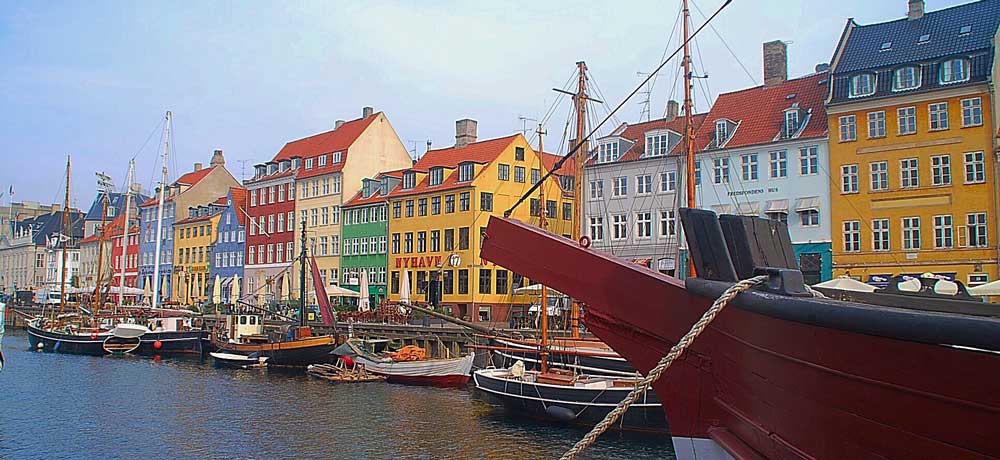
Day 3: Copenhagen
On Day 3 of your Denmark itinerary, go to Ved Stranden (a waterfront street in the heart of the city) to join a guided canal tour and experience Copenhagen from a completely different angle.
Sit back and relax as you cruise past some of the most famous buildings in the city while your tour guide tells you all about the history of these spots. As the boats are partially covered by a glass roof, you can still enjoy the tour even if it rains.
Next, head to the Christianshavn neighborhood to visit the Church of Our Saviour. The beautifully twisted spire of this church can be spotted from far away and the best part is that you can go all the way up to the tip of the spire!
There are 400 steps to climb but once you make your way to the top, you’ll be rewarded with incredible 360-degree views of Copenhagen. As the spire might be closed in case of bad weather, call the church ahead of your visit.
After that, wander the streets of the adjacent Freetown Christiania . Located on the site of an abandoned military base, Christiania is a self-governing hippie neighborhood with its laws, car-free streets, and quirky cafeterias. This is one of the more unique, offbeat places in Europe to visit.
Full of vibrant street art, eccentric architecture, and interesting characters, it’s a unique place that will make you want to reach for your camera. However, please note that photography is not allowed on the main street of Christiania known as Pusher Street.
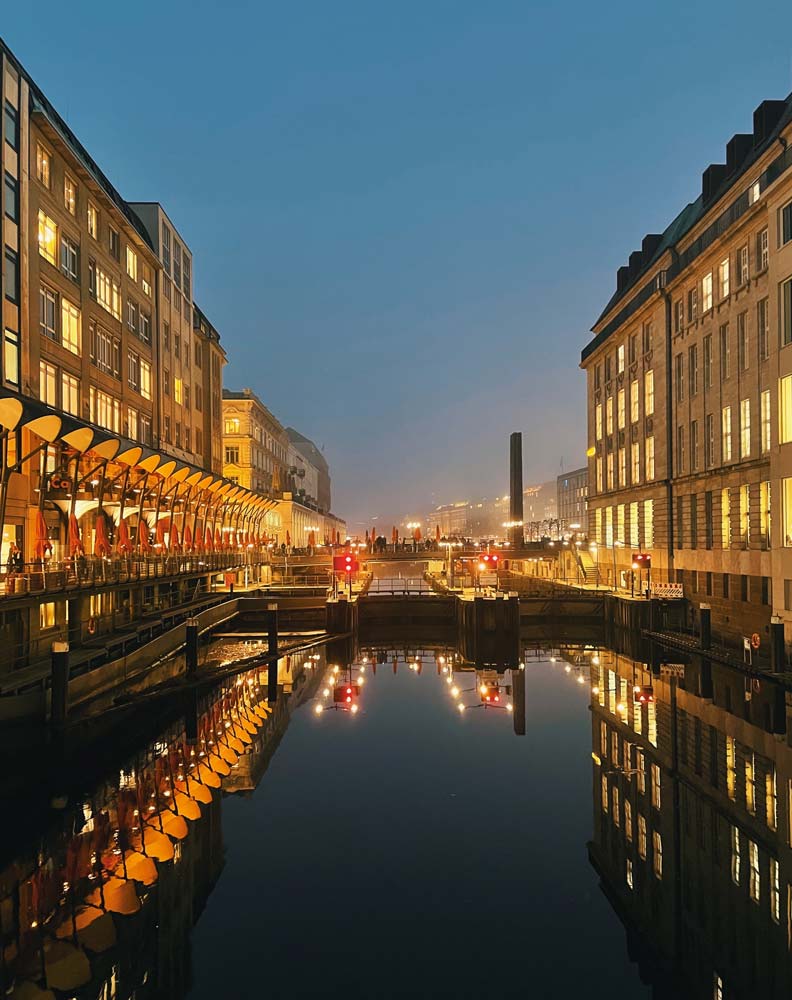
Round off your day with a visit to Reffen, the largest street food market in the Nordics. With 41 food stalls serving cuisine from every corner of the world, you can be sure to find a meal to your liking.
Since sustainability is of high importance at Reffen, the stalls sort their waste, use compostable plates and cutlery, make efforts to reduce food waste, and use organic ingredients as much as possible.
While Reffen’s main focus is on serving food, there’s also a handful of shops selling artisan products and vintage clothing. Bear in mind that Reffen is closed during the winter months.
Day 4: Louisiana Museum & Helsingør
As you’ve now seen a fair bit of Copenhagen during your Denmark itinerary, I recommend taking a trip outside of the city and heading north.
Spend the first half of the day exploring the Louisiana Museum of Modern Art which is located in Humlebæk , 35 kilometers from Copenhagen, and can easily be reached by train .
As its name suggests, the museum houses a collection of contemporary art, including works by Andy Warhol and Pablo Picasso .
Sitting right on the coast, Louisiana and its intriguing sculpture garden offer beautiful vistas of the Øresund strait and a must-visit place during your Denmark itinerary.
On top of that, the museum has a really interesting layout as it’s built around an old villa with glass corridors connecting the different wings of the building.
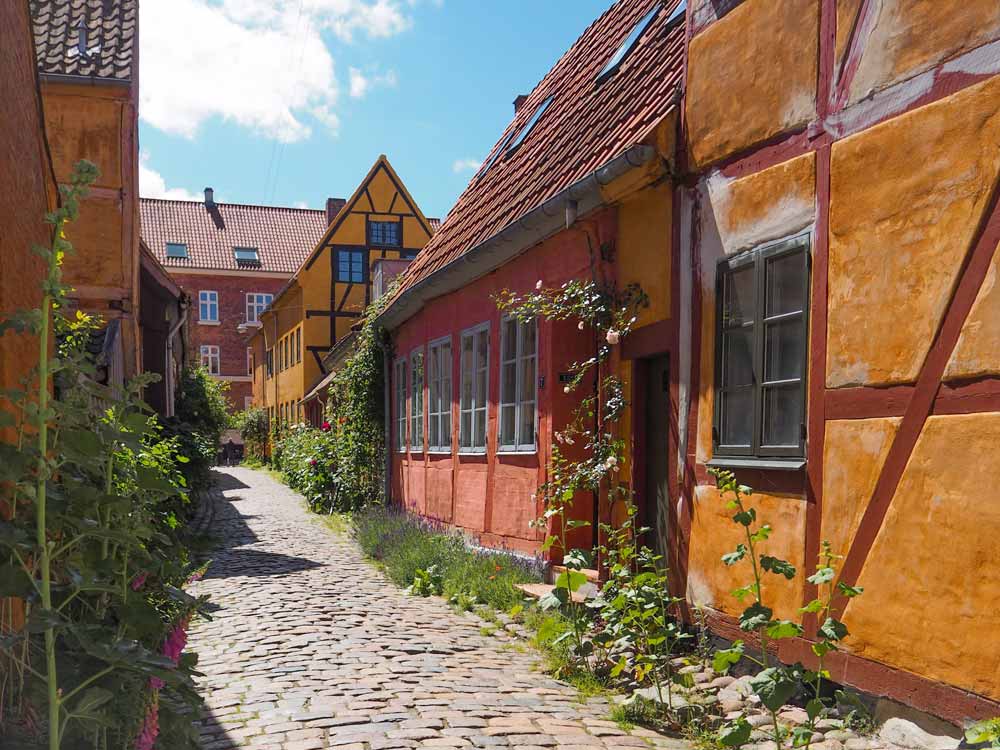
Next on your Denmark itinerary, take the train further north to the coastal town of Helsingør , also known as Elsinore. The center of the town has a notable medieval character , and its small cobblestone streets and colorful houses make it a truly picturesque place to walk around.
Explore the bustling shopping streets, sit down with a beer in one of the cozy restaurants, or roam around the modern harbor area.
If you liked the Little Mermaid Statue in Copenhagen, try to locate the glistening steel sculpture called Han in the harbor of Helsingør . Han translates into ‘He’ and is the male version of the Little Mermaid.
The main attraction in Helsingør though is the Kronborg Castle , a UNESCO World Heritage Site and the setting of Shakespeare’s Hamlet .
Wandering around outside of the castle is free of charge. However, if you choose to pay for the entrance, you’ll get to admire the palace’s Renaissance interior and exquisite tapestries, walk through the maze of underground dungeon passages, and enjoy the views from the castle tower.
After exploring Kronborg , I’d recommend spending the night in Helsingør during your Denmark itinerary. If your budget allows it, stay at the Marienlyst Beach Hotel which features an amazing spa with outdoor jacuzzis.
If you’d rather return to Copenhagen for the night, you can easily do that as it’s just a 40-minute train ride.
Day 5: Frederiksborg Castle
After checking out of the hotel, head to the train station and get ready to say goodbye to Helsingør. From there, catch a train to Hillerød , a small town 30 minutes away.
Note: If you choose to return to Copenhagen the night before, you can still get to Hillerød by taking an S-train (train network serving the metropolitan area of Copenhagen) from one of the stations in the center of the city.
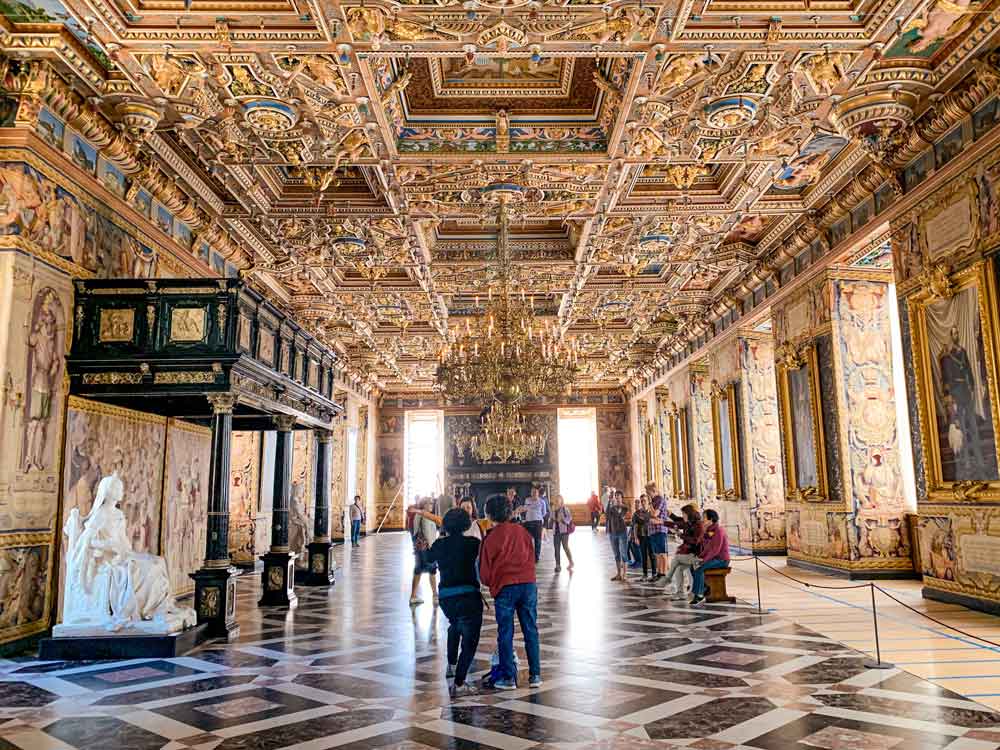
Hillerød is home to Frederiksborg Castle , one of the most spectacular cultural treasures of Denmark and a must during your 7-day Denmark itinerary.
Located on three islands in Castle Lake, Frederiksborg is the largest Renaissance complex in Scandinavia and is often referred to as the “Versailles of Denmark”.
Built in the 17th century, the castle used to be a royal residence but was later converted into a Museum of Danish National History . Nowadays, the museum displays a large collection of portraits, furniture, and art encompassing 500 years of Denmark’s history.
You can enjoy Frederiksborg’s terraced garden with perfectly trimmed hedges, fountains, and water canals free of charge. Seeing the interior of the castle, however, requires purchasing a ticket, which I highly recommend that you do.
The extravagant Renaissance decorations and the grandeur of the halls will blow your mind! To properly explore the castle and its gardens, expect to spend a minimum of two hours.
When you’re done wandering around Frederiksborg, take the train back to Copenhagen and spend the night there.
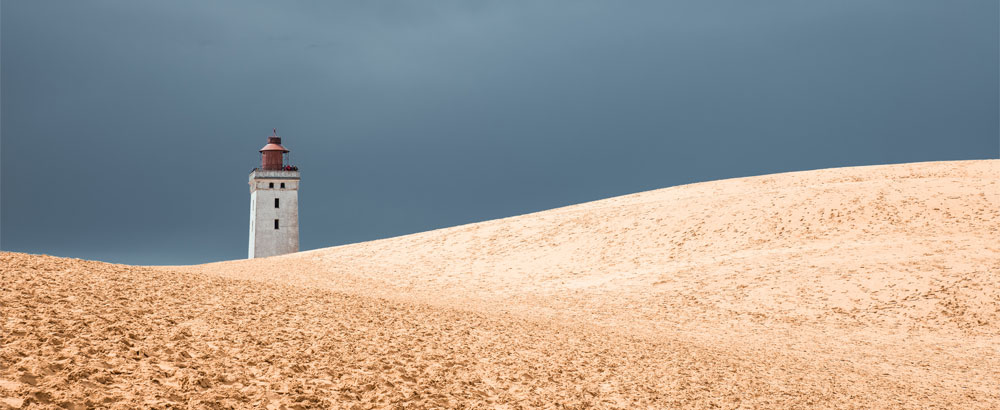
Day 6: The island of Hven
Next on your Denmark itinerary, it’s time for another trip outside of Copenhagen! Head to Havnegade Street near the harbor of Nyhavn to catch a ferry to the tiny island of Hven . It would be a good idea to book tickets online to be sure that you get a spot on the ferry.
This idyllic island lies in the Øresund Strait between Denmark and Sweden, just one and a half hours from Copenhagen.
Being only 7 square kilometers in size, the island is the perfect destination for a day trip.
As soon as you reach the island, you’ll be charmed by the scenic countryside and the laid-back vibes of this place.
The best way to explore Hven is to rent a bike and cycle along its picturesque coastal trails . This is the most common method for visitors to get around the island and there’s a massive bike rental point near the harbor which is impossible to miss.
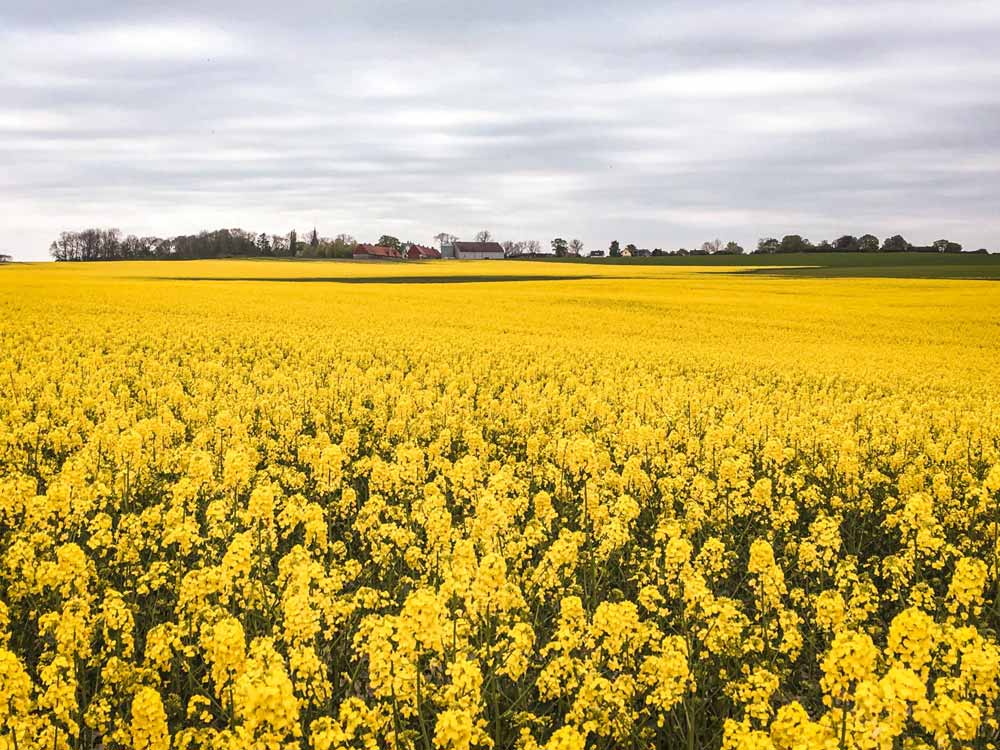
As you cycle through the island, you’ll come across adorable cottages, secluded beaches, rustic cafeterias, and artisanal shops. If you’re lucky, you might even see some alpacas pasturing on the fields on the eastern coast.
Also, make sure to stop at Kyrkbacken Harbor to buy some unbelievably delicious freshly smoked fish from the small smokehouses.
If you happen to visit Hven in May, you’re likely to see the island covered with a gorgeous yellow carpet of flowers since that’s when the canola fields are in bloom.
Besides the beautiful nature, one of the main attractions of Hven is the Tycho Brahe Museum named after a Danish astronomer who lived on the island and made many groundbreaking discoveries in science.
Another point of interest at Hven is the island’s very own whiskey distillery Spirit of Hven. Here you can get a tour to learn about the different stages of the production process and of course, sample their gins and whiskies.
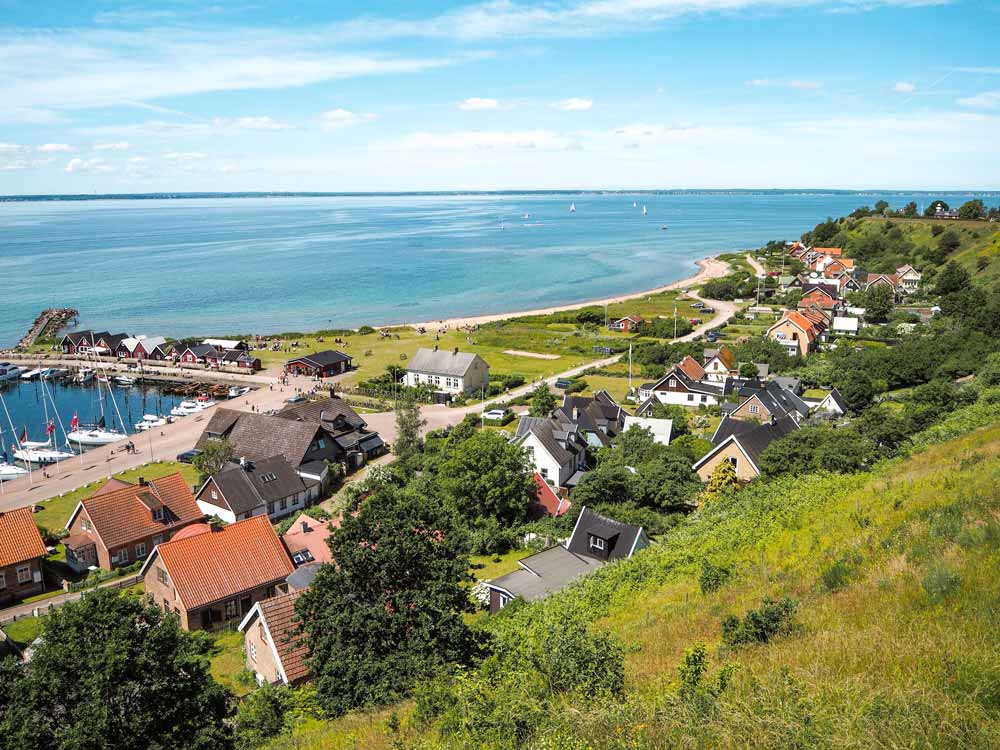
After touring the island, return your bike and head back to the harbor. As there’s only one ferry sailing back to Copenhagen each day, make sure you don’t miss it!
Note: Hven is a destination that I only recommend visiting from May to the end of September due to the weather. If you’re traveling to Denmark outside of this period, you might want to consider heading to Roskilde or Odense instead. Both of these are charming medieval towns that can be visited in a day.
Day 7: Dragør
Start the last day of your holiday in Denmark with a trip to Dragør . Located 12 kilometers south of Copenhagen, Dragør can be reached either by bus from Copenhagen Central Station or if you’re feeling active, by bicycle.
This sleepy fishing village is the perfect place to escape the stress of the city and spend a few relaxed hours by the sea. Dragør’s tiny quaint cottages, charming gardens, and maze of cobblestone alleys will make you feel like you’ve stepped into a different century.
Take a stroll along the picturesque marina and sit down in one of the waterfront restaurants. Or buy some Danish pastries, find a bench with a sea view, and simply enjoy the peace.
Dragør is also home to the Pilot Museum of Denmark and the Amager Museum , where you can learn about the special history of the village.
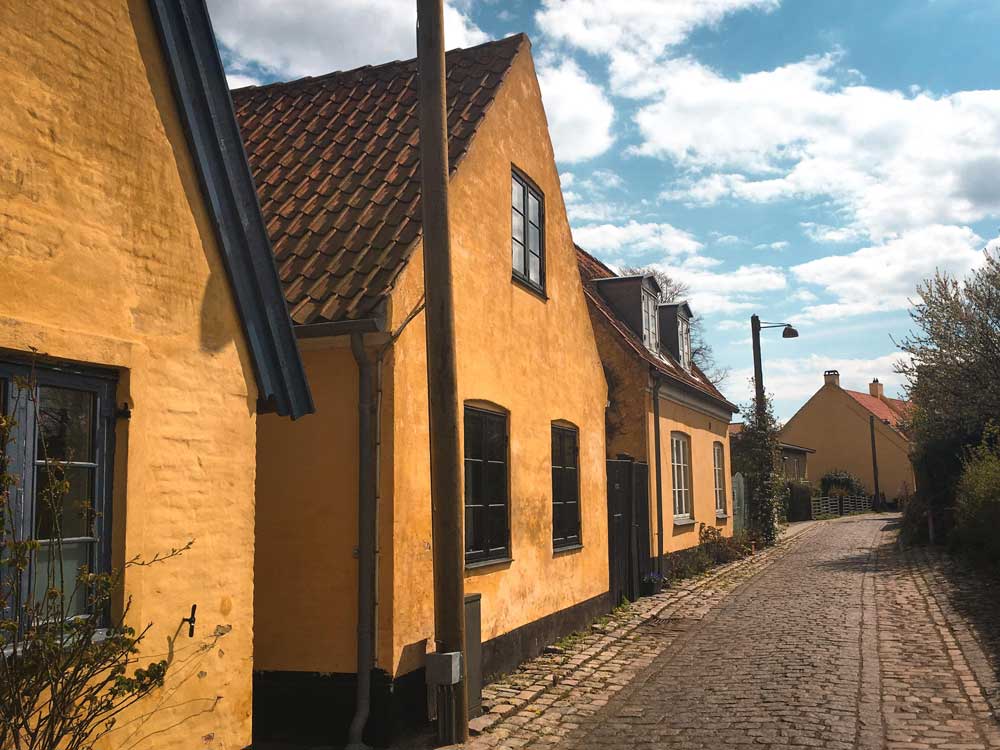
Next, if you still have any energy left and if the weather allows it, stop at Amager Beach on your way back from Dragør.
This beach is located on a narrow artificial island right next to the coast, where on one side you’ll find a lagoon great for kite surfing, and on the other side a long sandy beach with dunes.
On sunny summer days, this place is bustling with both locals and tourists sunbathing, having picnics, or doing sports. Despite the chilly waters, Amager Beach is a popular place for swimming, and you can even see winter bathers here during the colder months.
In case you’re visiting Denmark outside of the summer season, Amager Beach is still a nice place to stroll and enjoy the views of the sea, the Øresund Bridge, and the Middelgrunden wind farm.
Things to know before you go to Denmark
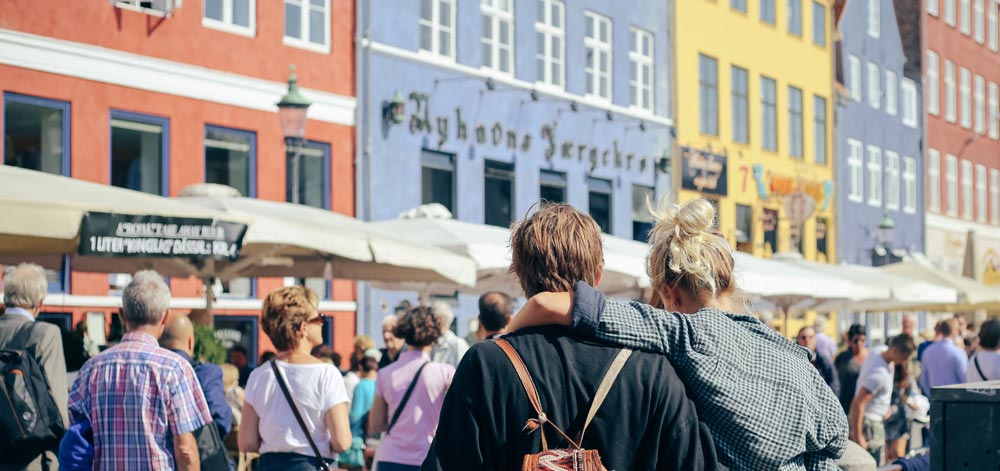
Best time to visit Denmark
June, July, and August offer the weakest weather in Denmark, with longer daylight hours meaning plenty of time to explore. However, August is a very busy month for tourism so visiting in May and the start of September will allow you to explore, stay warm and avoid the crowds.
December brings the holiday magic to Copenhagen; with streets full of lights and cute Christmas markets in Copenhagen to explore. Just make sure to wrap up warm during this time as it can get chilly!
Getting around Denmark
When following this Denmark Itinerary, there are a few ways you can get around the country and Copenhagen.
- DSB (Danish State Railways): The national railway company offers extensive coverage across the country, including major cities and towns.
- Regional and InterCity Trains: Connect different regions efficiently.
- S-tog: The suburban rail network serving the Copenhagen metropolitan area.
- InterCity Buses: Operators like FlixBus provide long-distance travel between cities.
- Local Buses: Available in cities and towns, with frequent service.
- Copenhagen Metro: An efficient and modern metro system serving Copenhagen and its suburbs, with lines M1, M2, M3 (City Circle Line), and M4.
- Cycling: Denmark is known for being bike-friendly, with extensive cycling paths and bike rental options in most cities.
- City Bikes: Public bike-sharing systems like Bycyklen in Copenhagen.
- Domestic Ferries: Connect to various Danish islands via ferry.
- International Ferries: Services to neighboring countries like Sweden and Germany.
Taxi and Ride-Sharing
- Taxis: Readily available in cities; can be hailed on the street or booked via apps.
- Ride-Sharing: Services like Uber are not available in Denmark, but local apps such as MOOVE can be used.
Electric Scooters
- E-Scooter Rentals: Available in major cities, with companies like Lime and VOI operating fleets.
Typical prices in Denmark
Accommodation
Budget: Hostels can be found in Copenhagen for around $45 with private rooms starting at $65.
Midrange: Budget hotel prices range from $100 – $220 with rental apartments costing $200 a night.
Luxury: High-end, luxury hotels can be found from $180 a night.
Transport: Prices vary depending on how many zones you are crossing on public transport but travel across zones is under $4 and 10 trip tickets are available for around $23.
The average cost of food:
You can pick up affordable breakfast items from a cafe for $5 whilst hostels often have breakfast included for free. A street food or takeaway lunch will cost around $7 to $10 whilst sit-down dinners start at $15.
Read 100 ways to travel Europe and save money to explore Denmark and beyond!
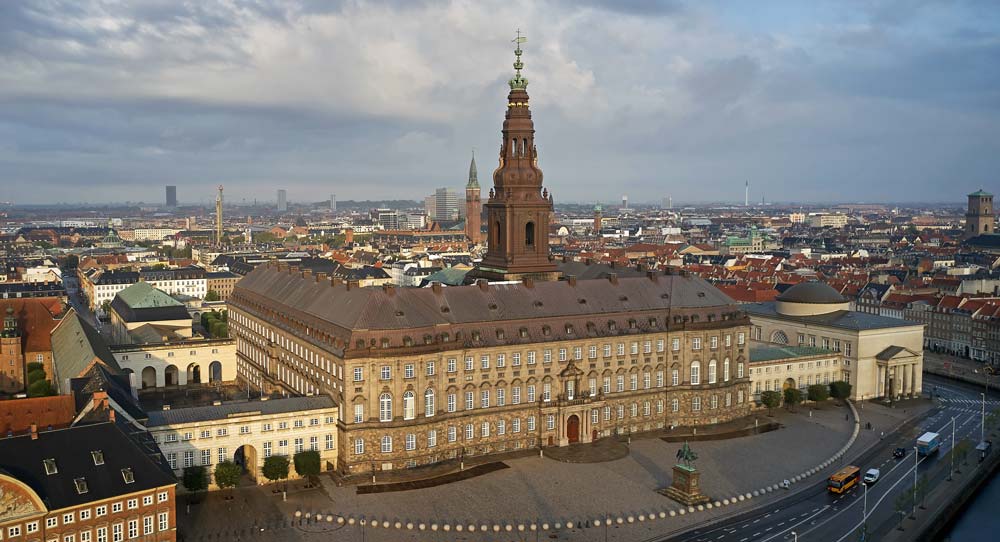
Save money in Denmark
- Stay in a hostel – As with most places in the world, staying in a hostel is the cheapest accommodation option for you. Hotels in Copenhagen are pricey, so stay in hostels or budget hotel rooms and book in advance.
- Avoid Airbnb – Airbnb is available in Copenhagen but places are often overpriced compared to mid-range hotels.
- Off-Season – Visiting in October, November, January, and February can get you the best hotel and flight prices, as this is a quieter time in the city before the slide during Christmas.
- Free things to do in Denmark – Head to Nyhavn, a canal district lined with colorful buildings and one of the most picturesque places in Copenhagen. The King’s Garden and Stroget Street are both free attractions to visit as is the Torvehallerne Market.
- Visit Christiania – This neighborhood is known as the green light district because you can legally buy cannabis here. However, there are also plenty of affordable cafes, cheap souvenir shops, and plenty of street art to explore.
- Avoid drinking – Alcohol prices are high so avoid drinking too much when visiting Denmark on a budget.
- Cheap meals – If you are looking for a cheap meal out, try a local cafe or an Asian restaurant such as a Chinese and Thai restaurant.
Denmark Itinerary F.A.Q
How many days do you need to see Denmark?
If you plan on sticking to just Copenhagen, then 3-4 days is enough. However, if you want to visit the nearby cities and destinations, you will need at least 7 days in Denmark.
What is the best month to visit Denmark?
June, July, and August offer the longest days and the warmest temperatures, making them the best months to visit Denmark.
How to spend 5 days in Denmark?
Day 1-2: Explore Copenhagen
Day 3: Helsingor
Day 4: Hven
Day 5: Dragor
What is the prettiest place in Denmark?
The white cliffs of Mon are the most famous and prettiest place to visit in Denmark.
Is Denmark cheap for tourists?
Denmark is a cheaper destination than you might expect. You can save money by sticking to hostels, booking in advance, and planning which restaurants you can take advantage of; there are quite a few budget-friendly options in the country.
Stay Creative!
Thank you for your support and love for Creative Travel Guide. If you are looking for more video tips, make sure to head over to your YouTube channel and follow us on Instagram for daily tips and chats.
Share any questions or comments below and happy creative travels!
This site uses Akismet to reduce spam. Learn how your comment data is processed .
Copenhagen Bucket List - Creative Travel Guide
Saturday 15th of June 2024
[…] rich histories and a fairytale atmosphere, pack your bags and visit Copenhagen, a must on many a Denmark itinerary! Why? Well, it’s a city where old-world stories meet modern-day […]
Christmas in Europe - BEST EUROPEAN WINTER DESTINATIONS - Creative Travel Guide
Friday 24th of May 2024
[…] Copenhagen is an incredibly romantic experience so is the perfect choice for couples wanting a getaway and need to be on any Denmark itinerary. […]
James russey
Thursday 18th of April 2024
I am looking too plan a 7 day trip to Denmark beside plane travel sometime next year in late spring for two senior citizens
Exploring Denmark's Wonders A Captivating 7 Day Itinerary
Wednesday 24th of January 2024
[…] monarchy, Denmark’s story is one of resilience, cultural richness, and adaptation. The Viking Age, with its raids and exploration, has left an indelible mark on Denmark’s identity. The establishment visit of the Kingdom of Denmark set the stage […]
Discovering Wonderland Your Ultimate 7-Day Scandinavian Escape
[…] that seamlessly blends history, culture, innovation, and natural beauty into a harmonious symphony. Our coastal farewell becomes a moment of reflection, standing on the shores where the land and sea converge. The waves whisper tales of our adventures, […]

IMAGES
VIDEO